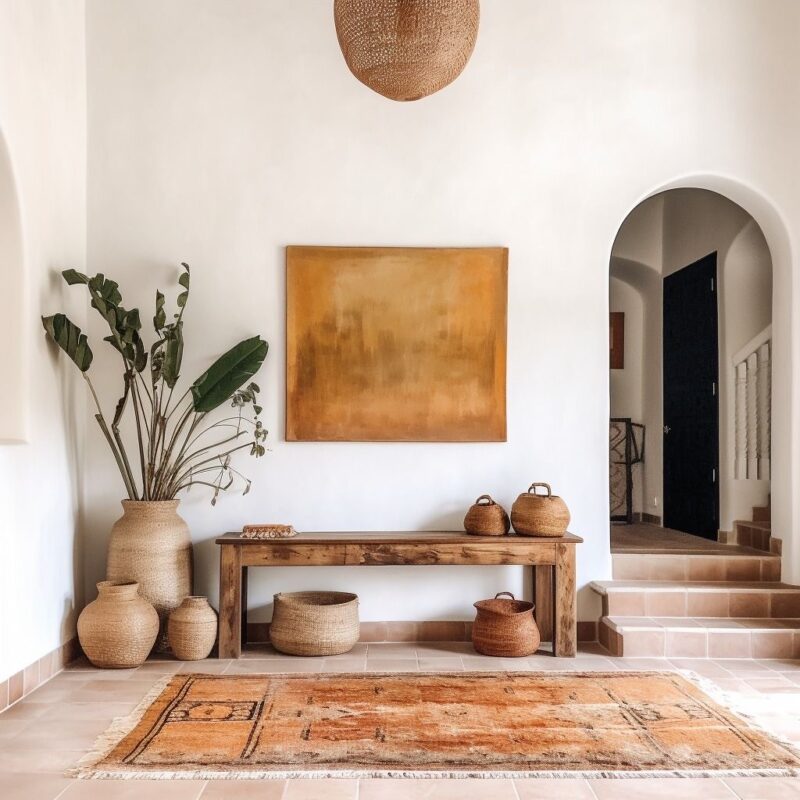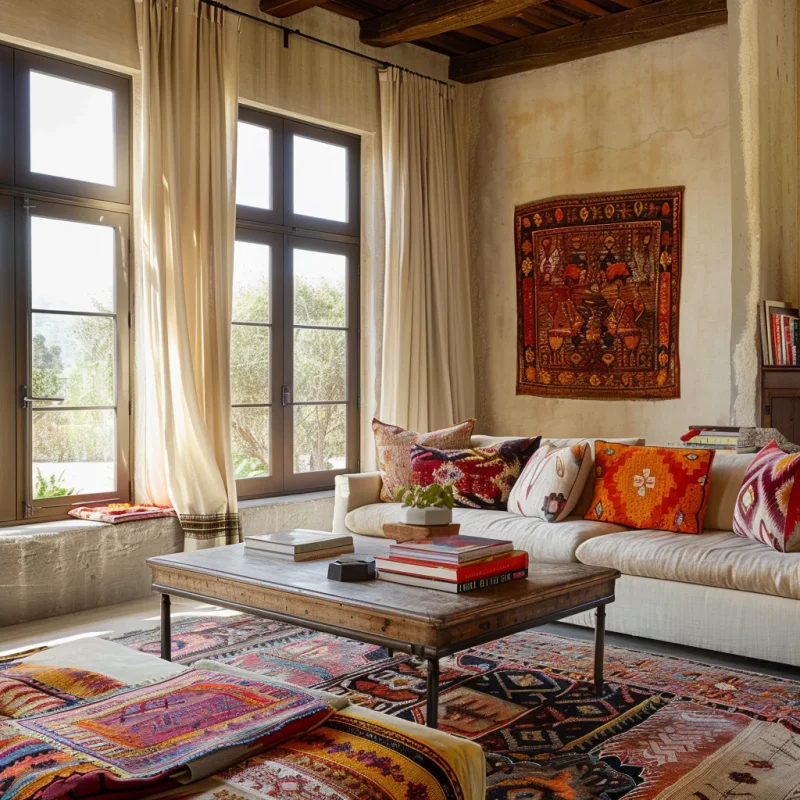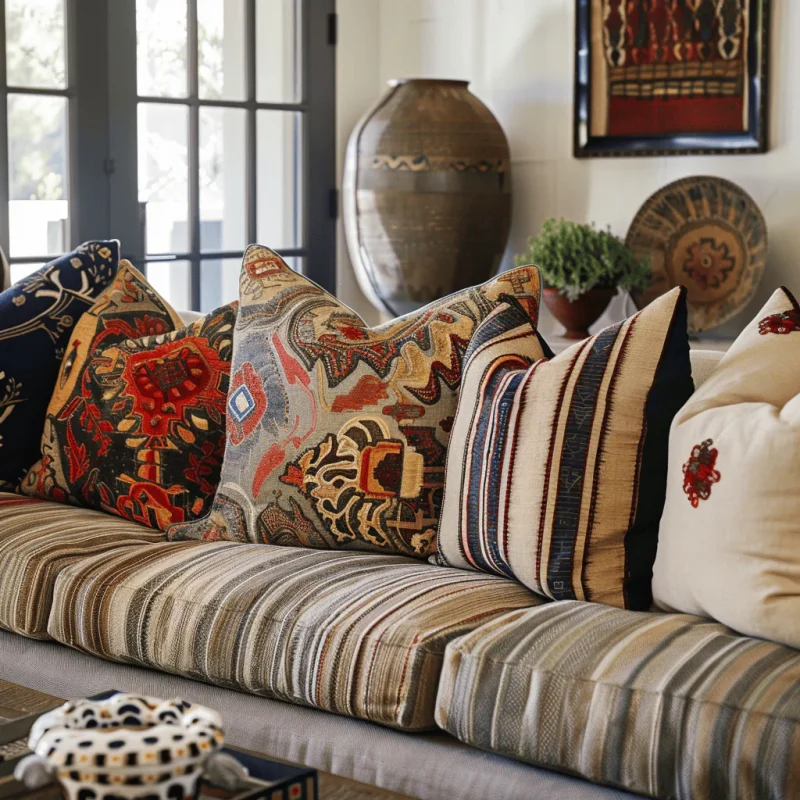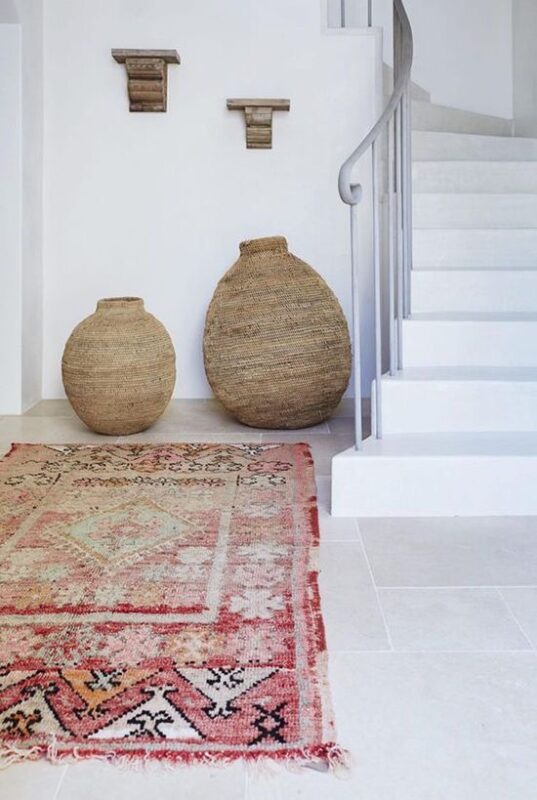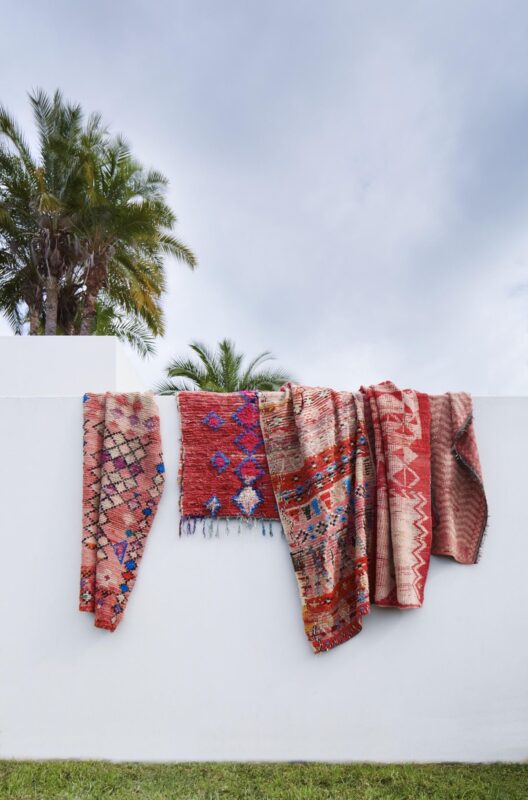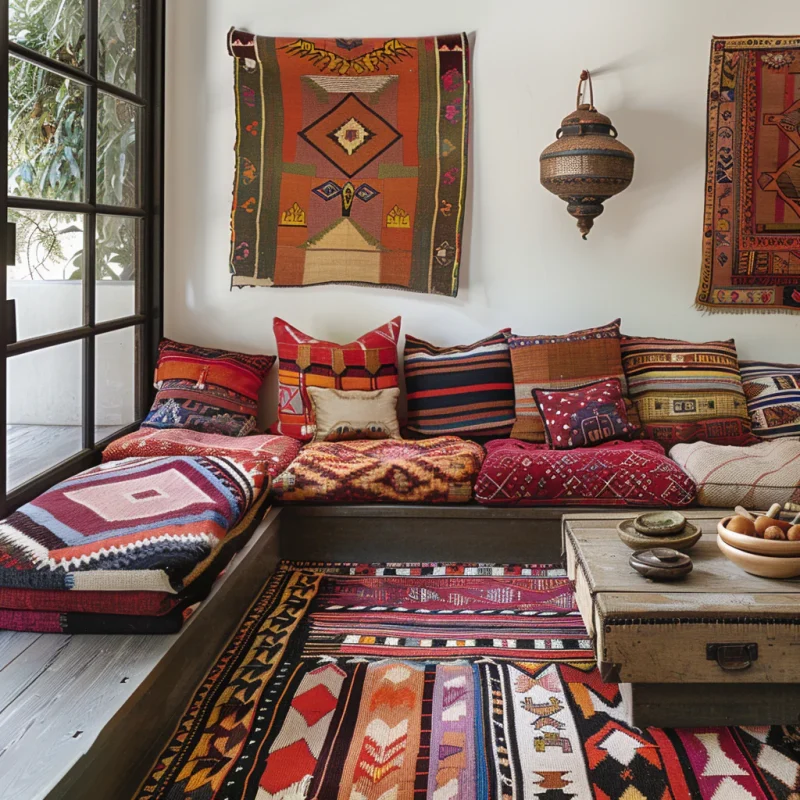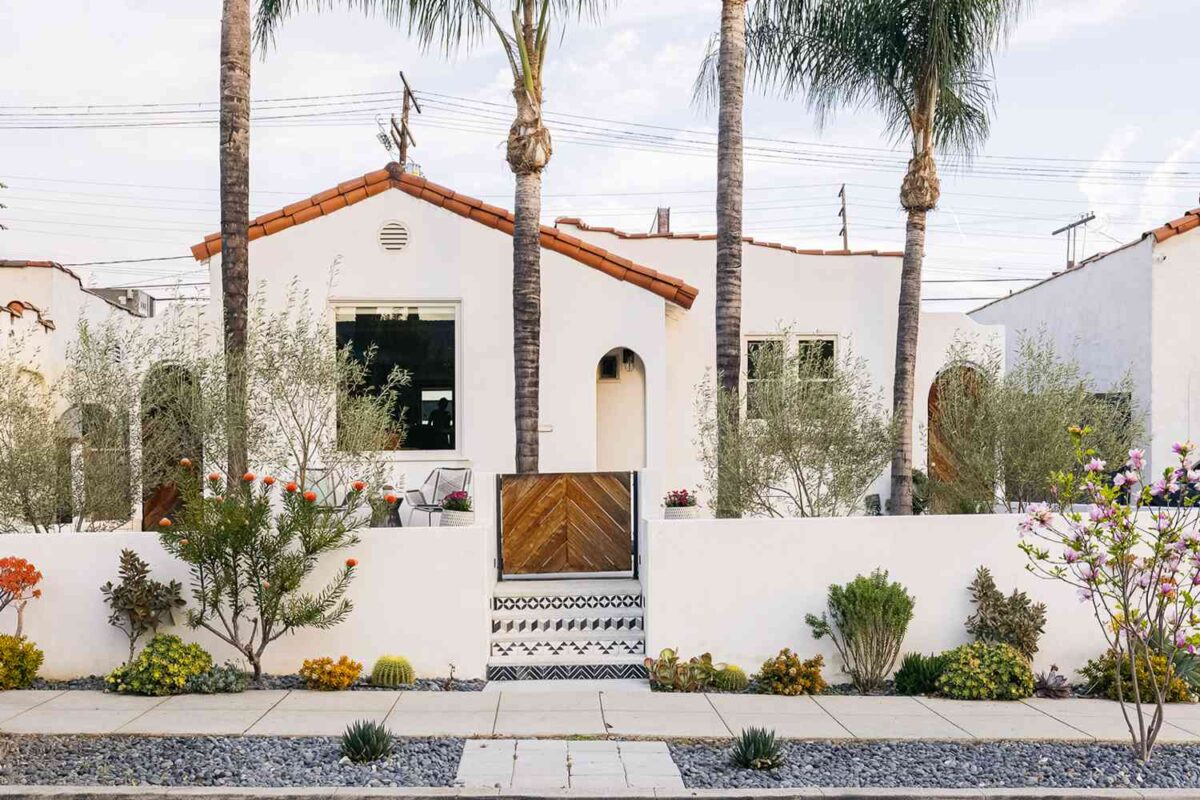Inspired by the architecture of Spain, Italy, and other European countries, including France, Portugal, Greece, reminding of seaside retreats and vineyards, Mediterranean-inspired homes showcase timeless style with global appeal.
Mediterranean interior design highlights the landscapes, history and communal culture of this diverse region. With its emphasis on warmth and outdoor living, the aesthetic is often associated with wealth and a leisurely lifestyle.
Though many Mediterranean styles stem from the European edge of the sea (like Greece, Italy, and Spain), much warmth of the Mediterranean-style homes comes from influence of Morocco, Turkey, Israel and the other countries bordering the Mediterranean coast. While they all share similarities, each country has its own design sensibilities based on its land, culture and traditions. Stateside, Mediterranean-inspired homes gained widespread appeal in the 1920s, especially in California and Florida, where it continues to be a popular home style today.
Due to their historic nature, Mediterranean-style houses and interiors carry timeless appeal and can easily be modernized by pairing contemporary furniture with historic architecture and natural features.
Mediterranean-style homes vary depending on the specific architectural influences, Mediterranean Revival, Spanish Colonial, Moroccan, Neo-Mediterranean and so on, but many showcase similar exterior elements. Here are the typical characteristics of Mediterranean Architecture:
- Clay roof tiles
- Stucco walls, mix of aged patinas
- Arched doors and windows
- Wrought-iron details
- Spacious outdoor living areas
Several of these distinctive exterior Mediterranean features, including the stucco and roof materials, are intended to help keep these homes cool in hot, sunny climates. That is why, the original Mediterranean homes were often more cozy and intimate with lower ceilings and smaller windows. The modern Mediterranean style aims to open up the space a bit more with higher ceilings, larger windows, and a focus on open-floor layout plans for the perfect balance of indoor-outdoor living. Abundant plantings often surround large porches, patios, and courtyards.
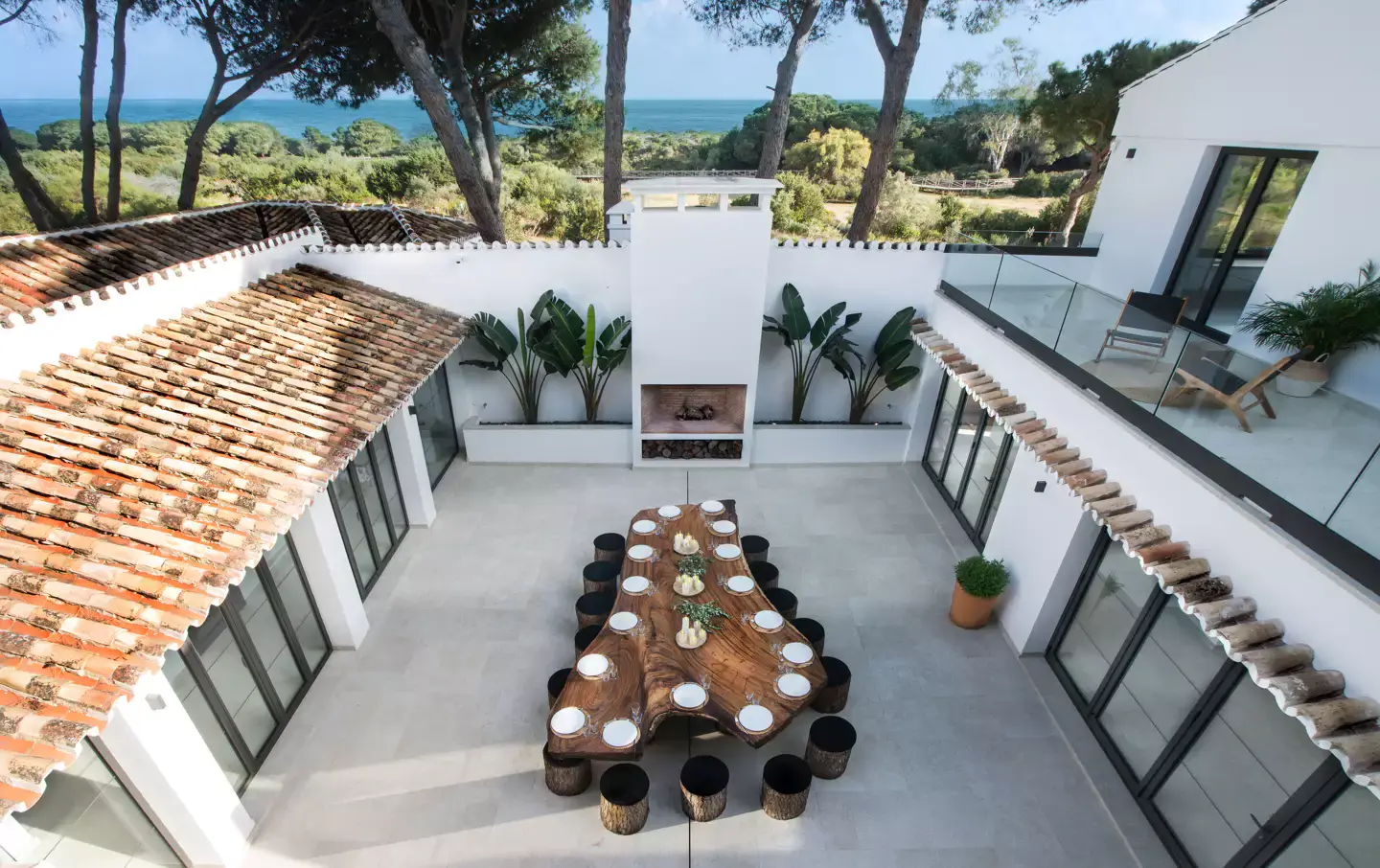
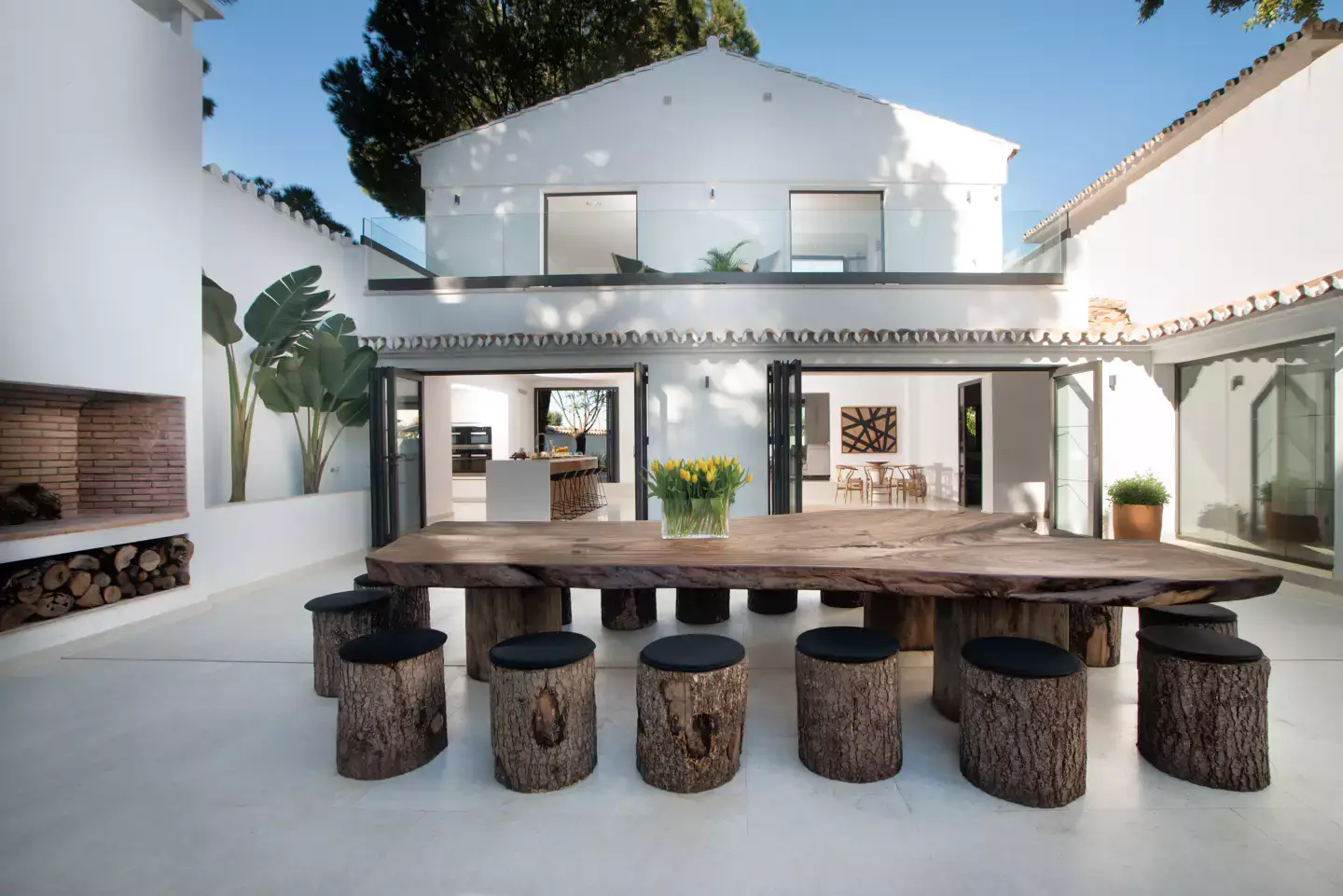
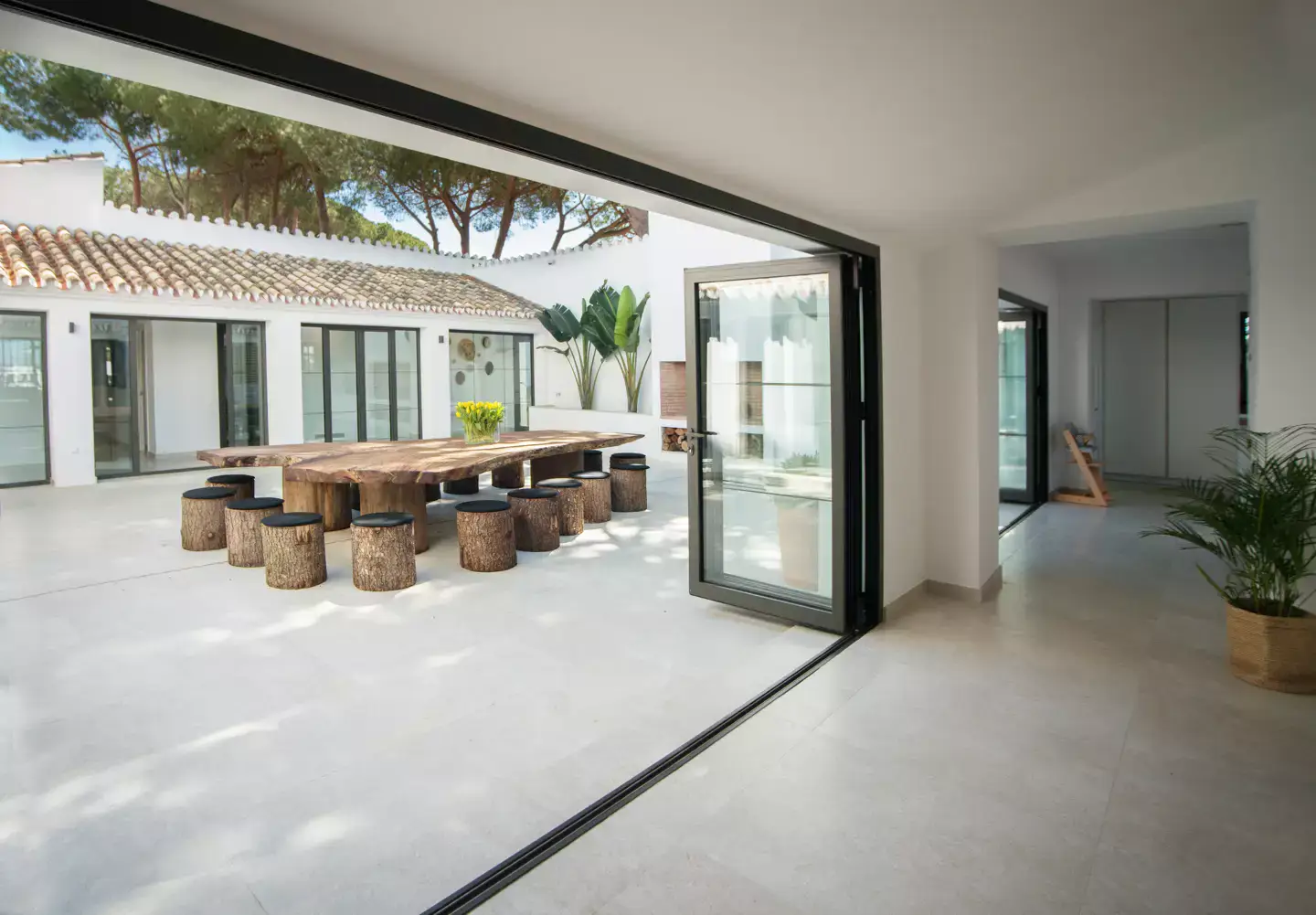
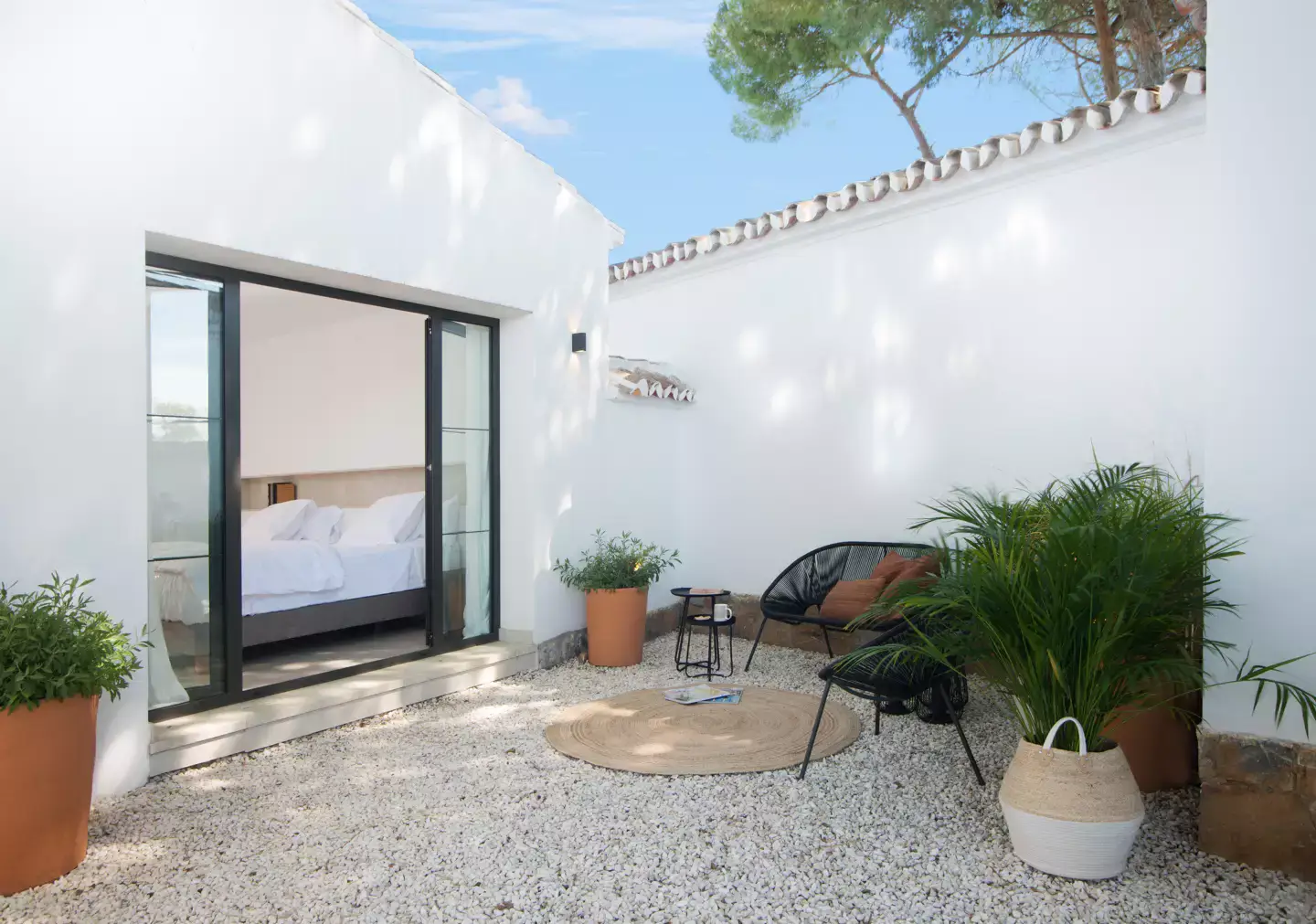
Today’s dream home is a classic mediterranean perfectly paired with modern lines and organic textures. The design, full of layered neutrals, feels sophisticated but maintains an easy welcoming vibe.
Like many of us, if you’re fascinated by this seaside design style and obsessed with creating the perfect room that evokes feelings of relaxed luxury, brilliant comfort and elegance, here is our Mediterranean decor style guide to inspire & help you get started!
The color scheme
Mediterranean interior design features natural materials like wood and stone for main structures, highlights bright and airy spaces by intentionally using colors found in nature. Like whites, creams, sea or sky blues, desert tans, and others depending on the region the building takes place.
Greek Contrast
Turquoise, cerulean, blue-greens, cobalt blue against white walls.
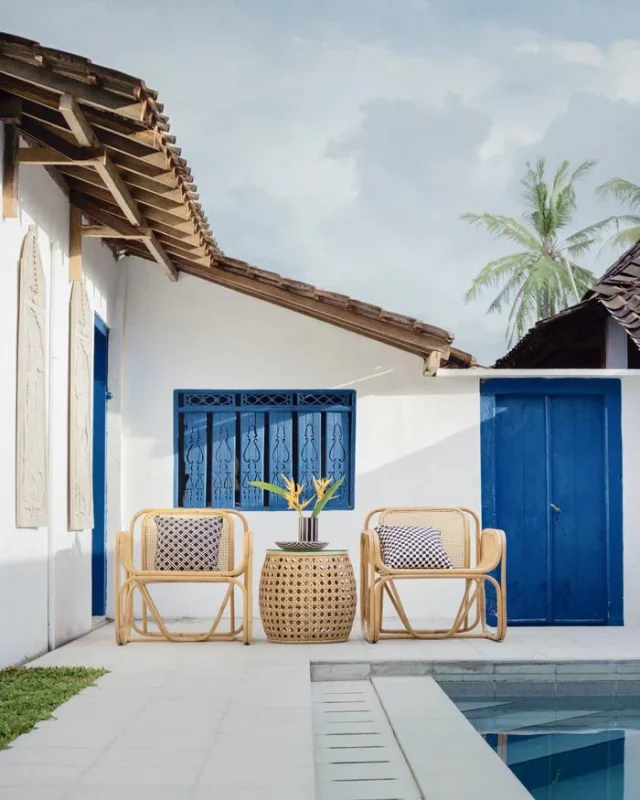
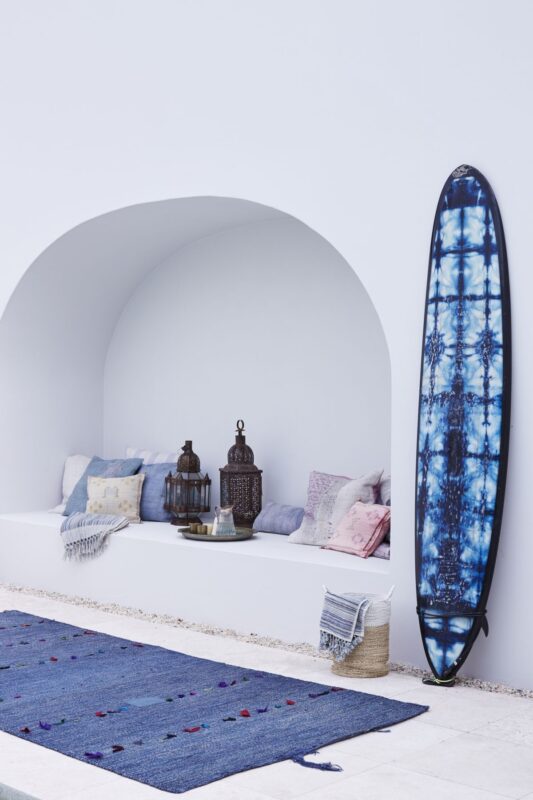
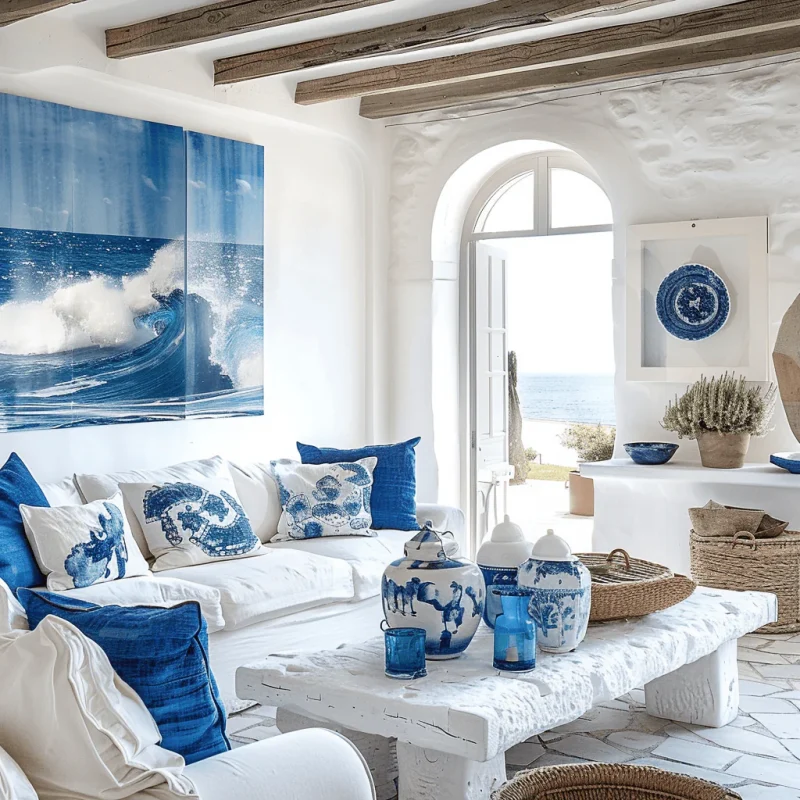
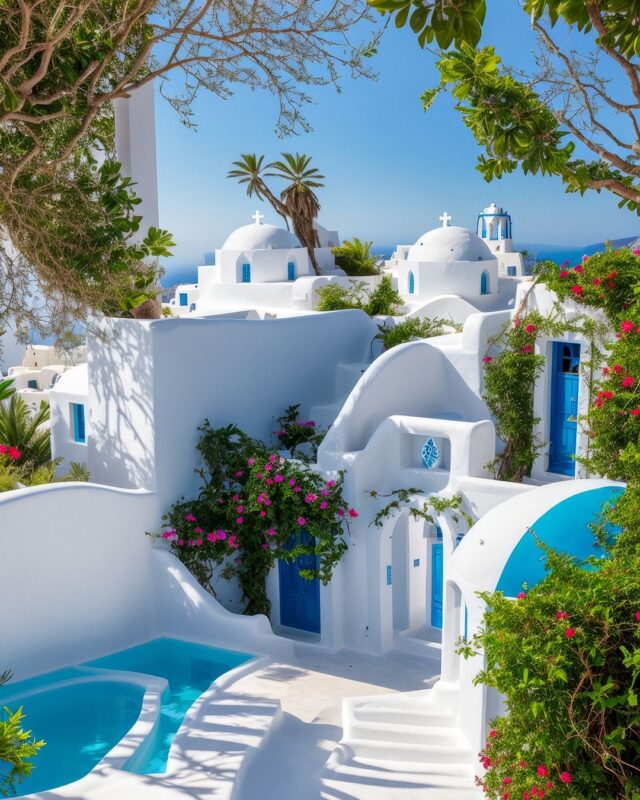
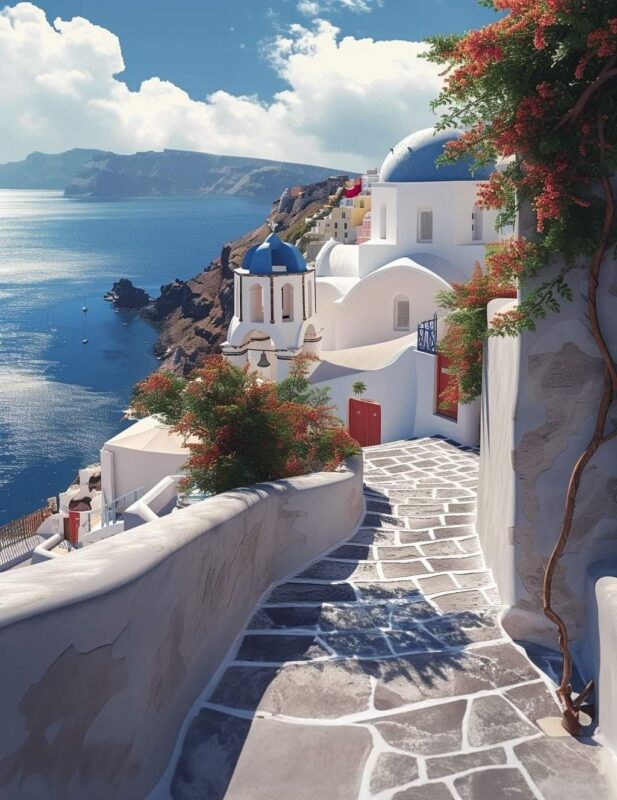
Spanish Depth
Rich shades of blue, green, red, and yellow with dark wood and elaborate patterns.
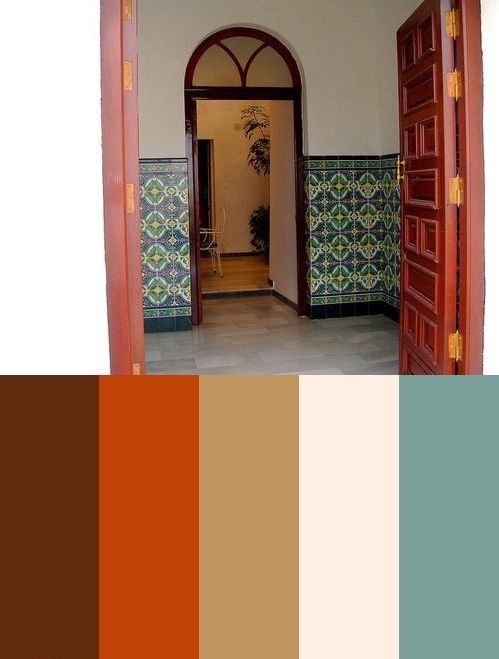
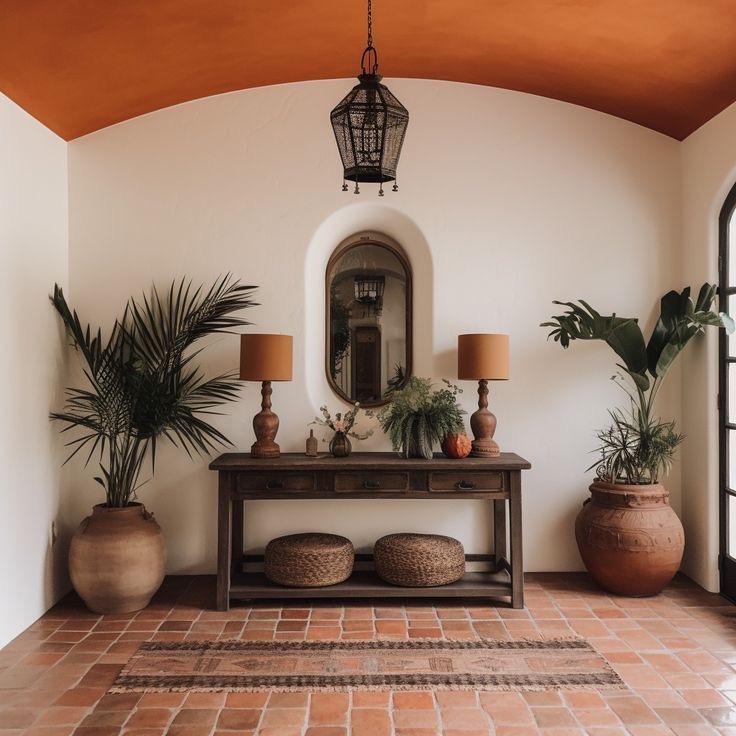
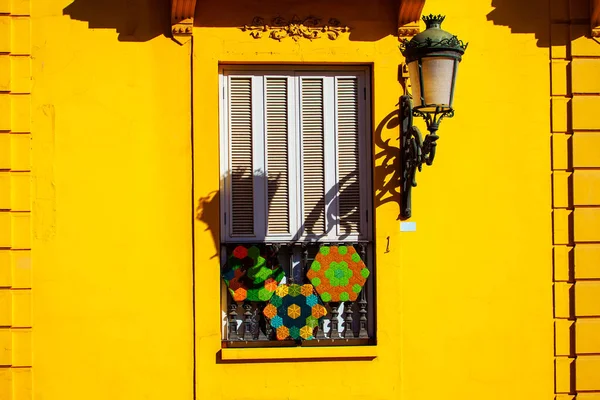
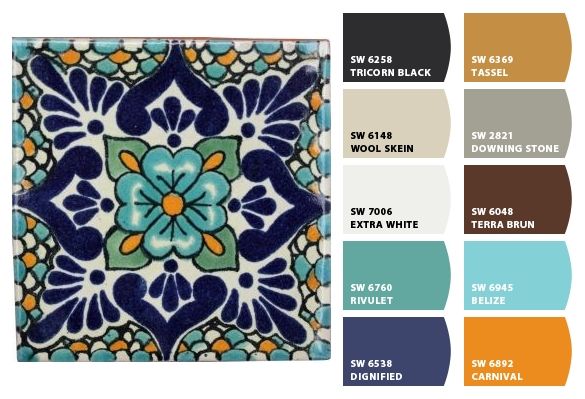
Italian Warmth
Warm earthy shades of gold, red, orange, and light brown with a creamy base.
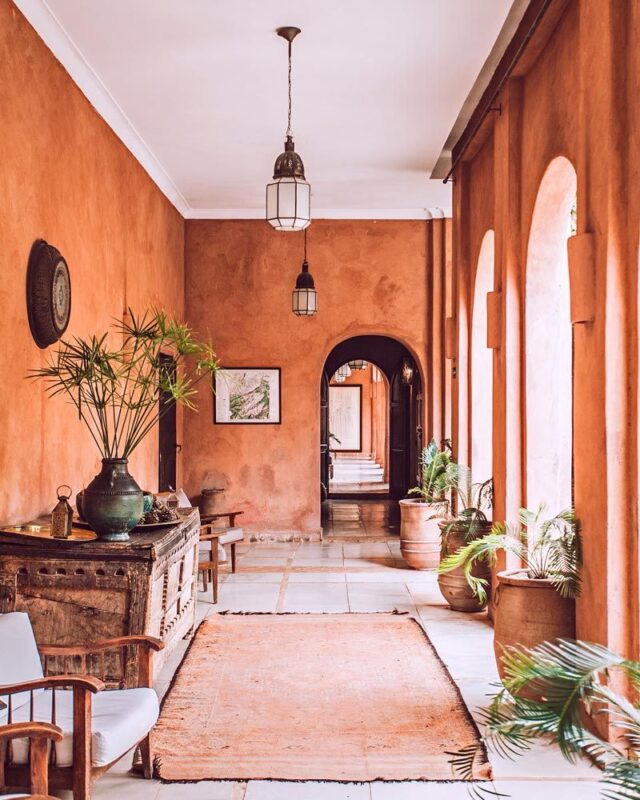
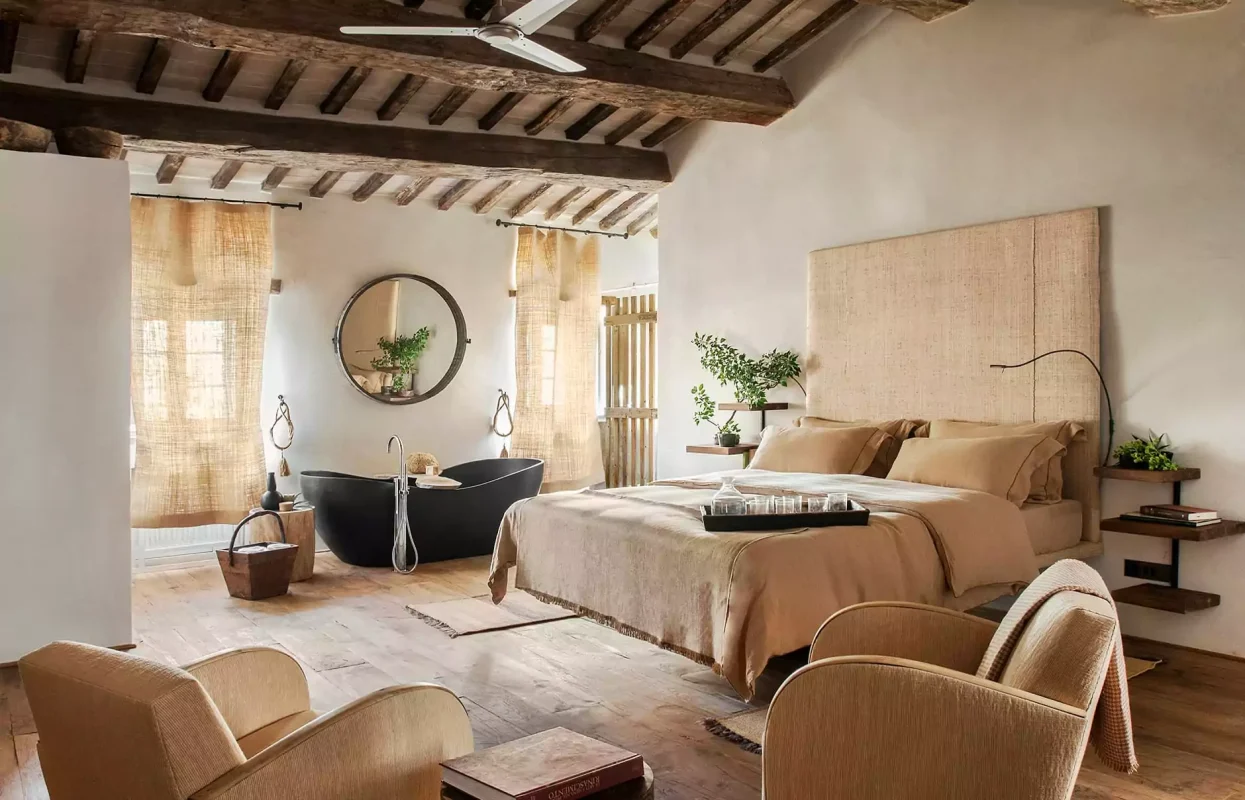
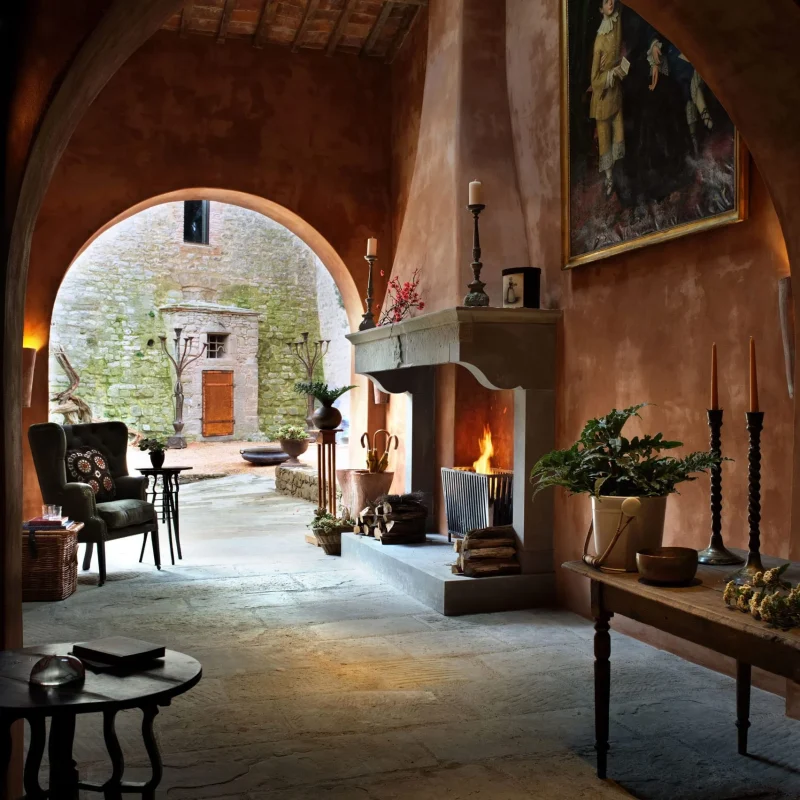
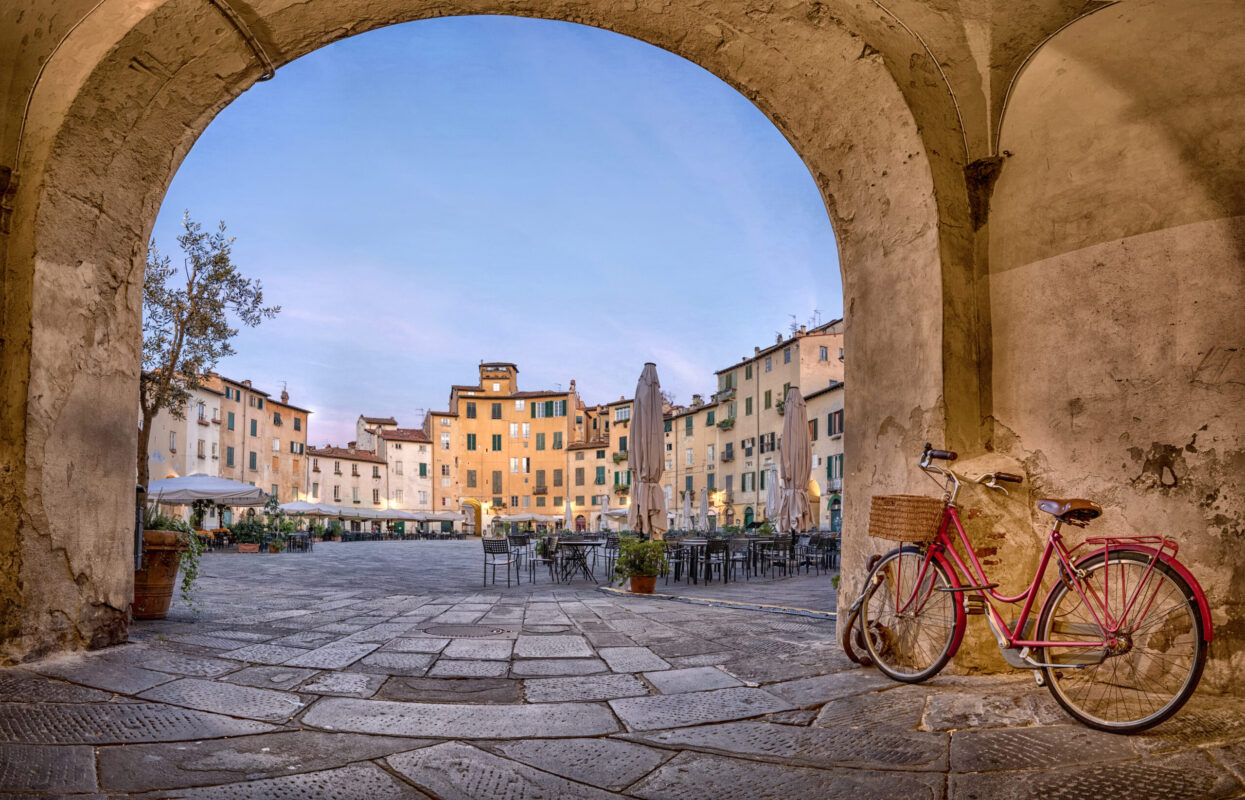
Moroccan Vibrance
Soft, earthy neutral tones like cream and beige to vibrant blues, greens, reds, oranges. Vibrantly colored textiles and intricate patterns.
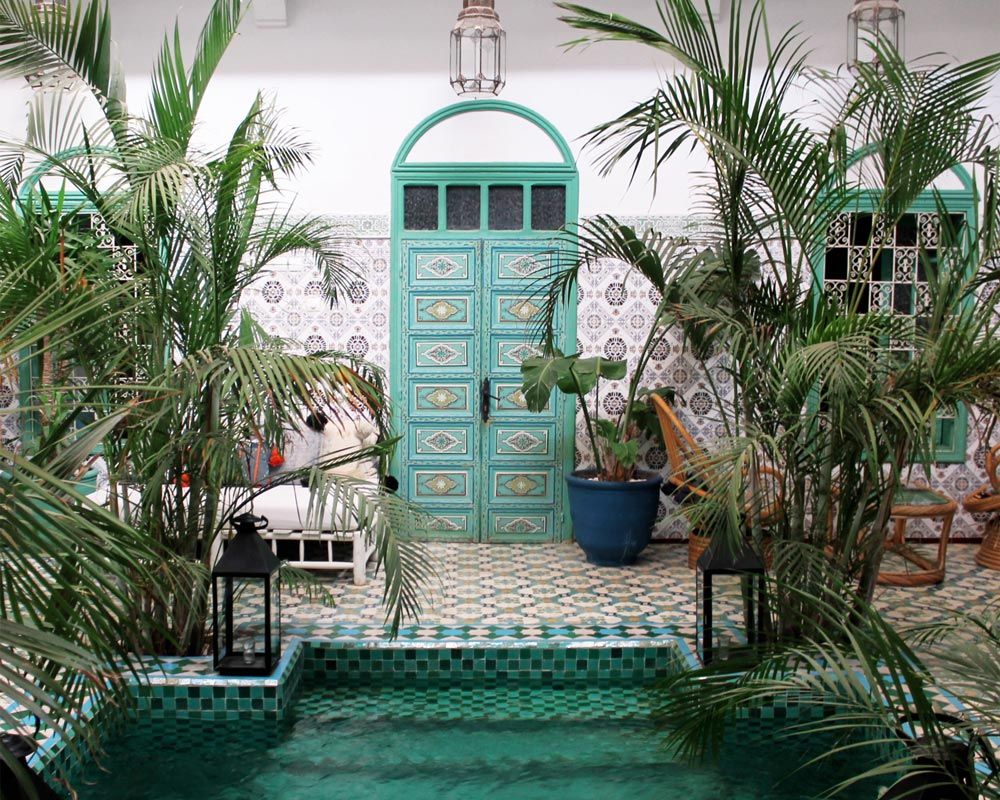
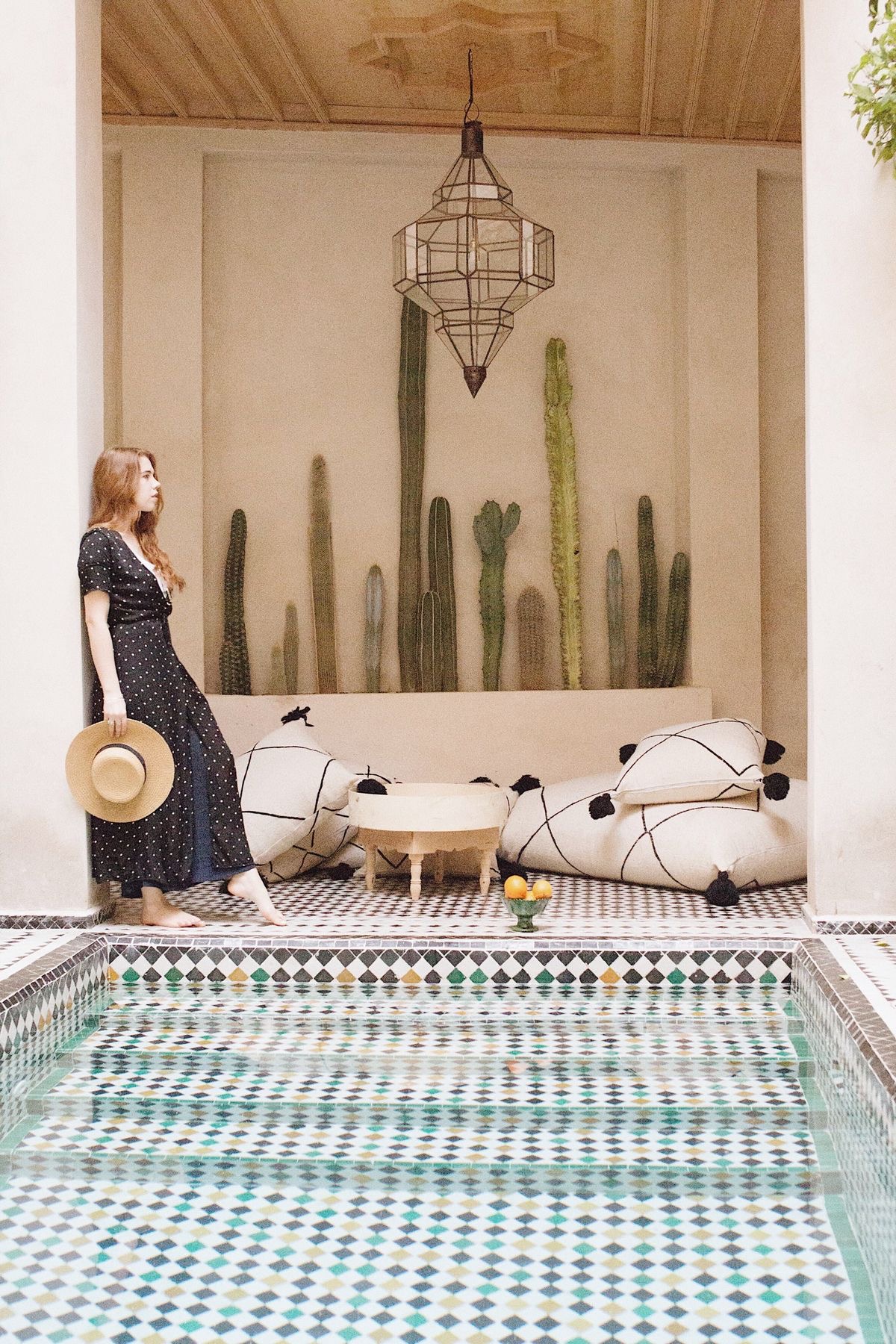
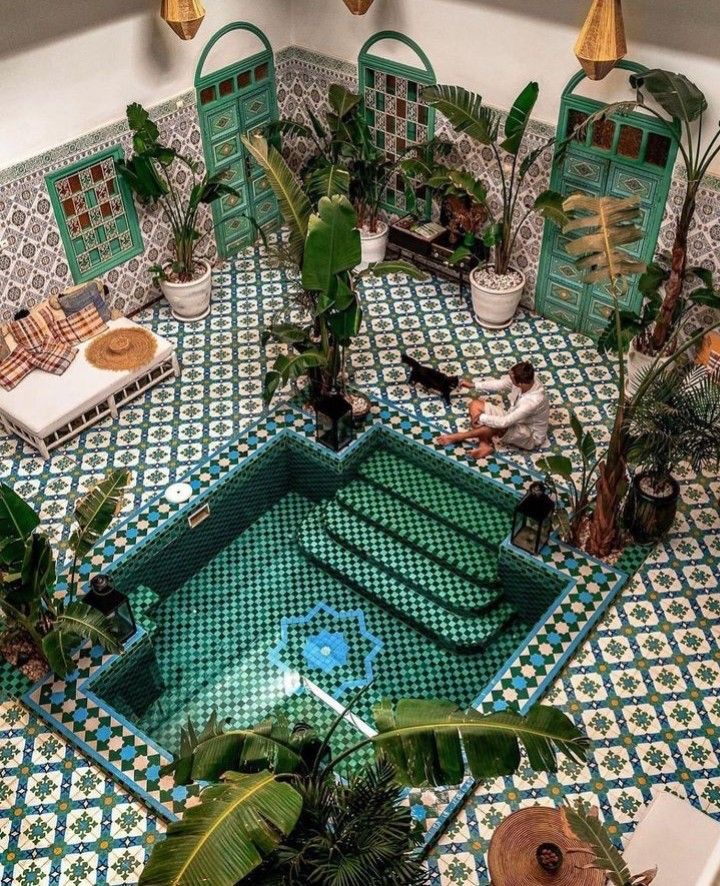
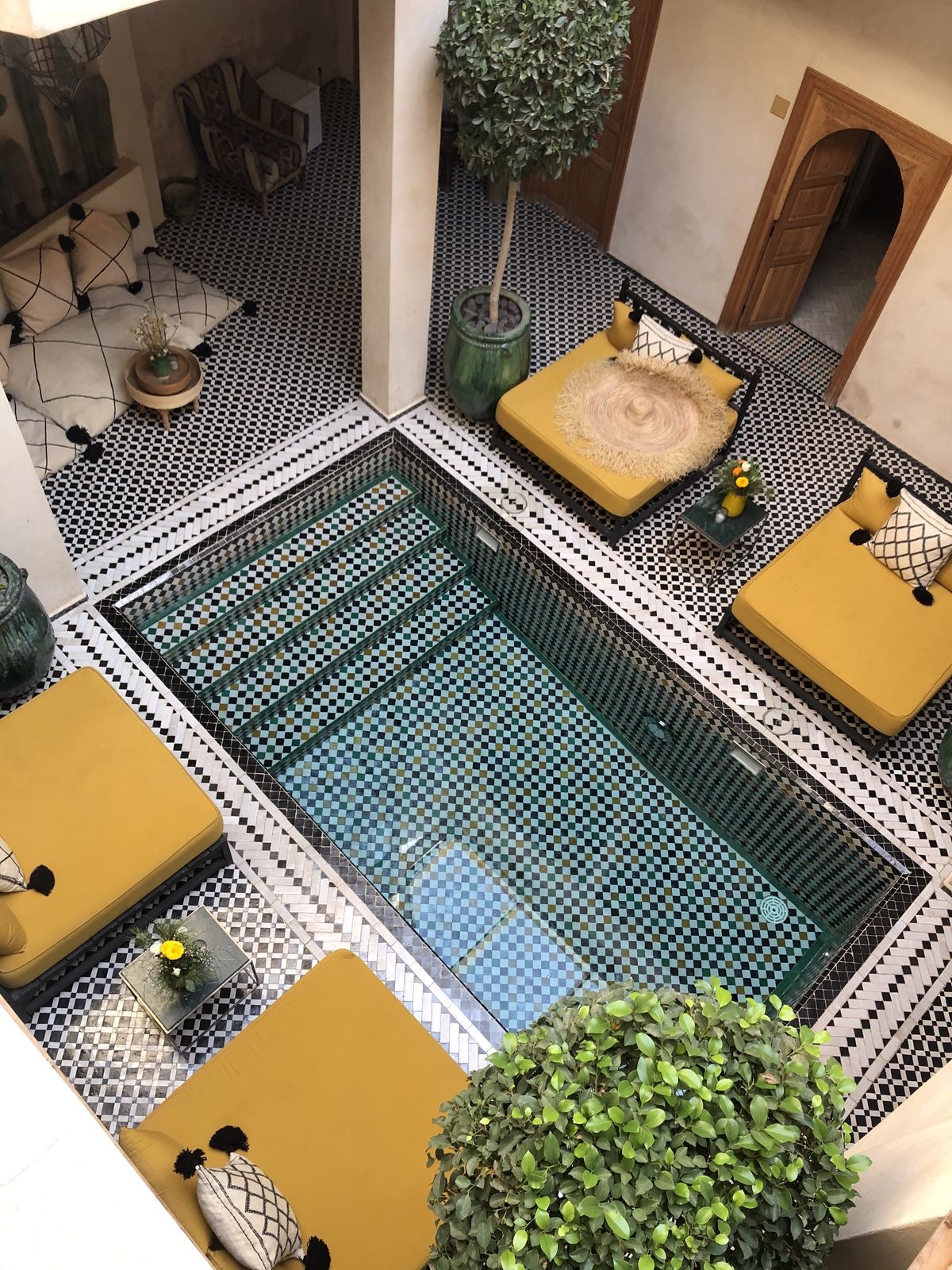
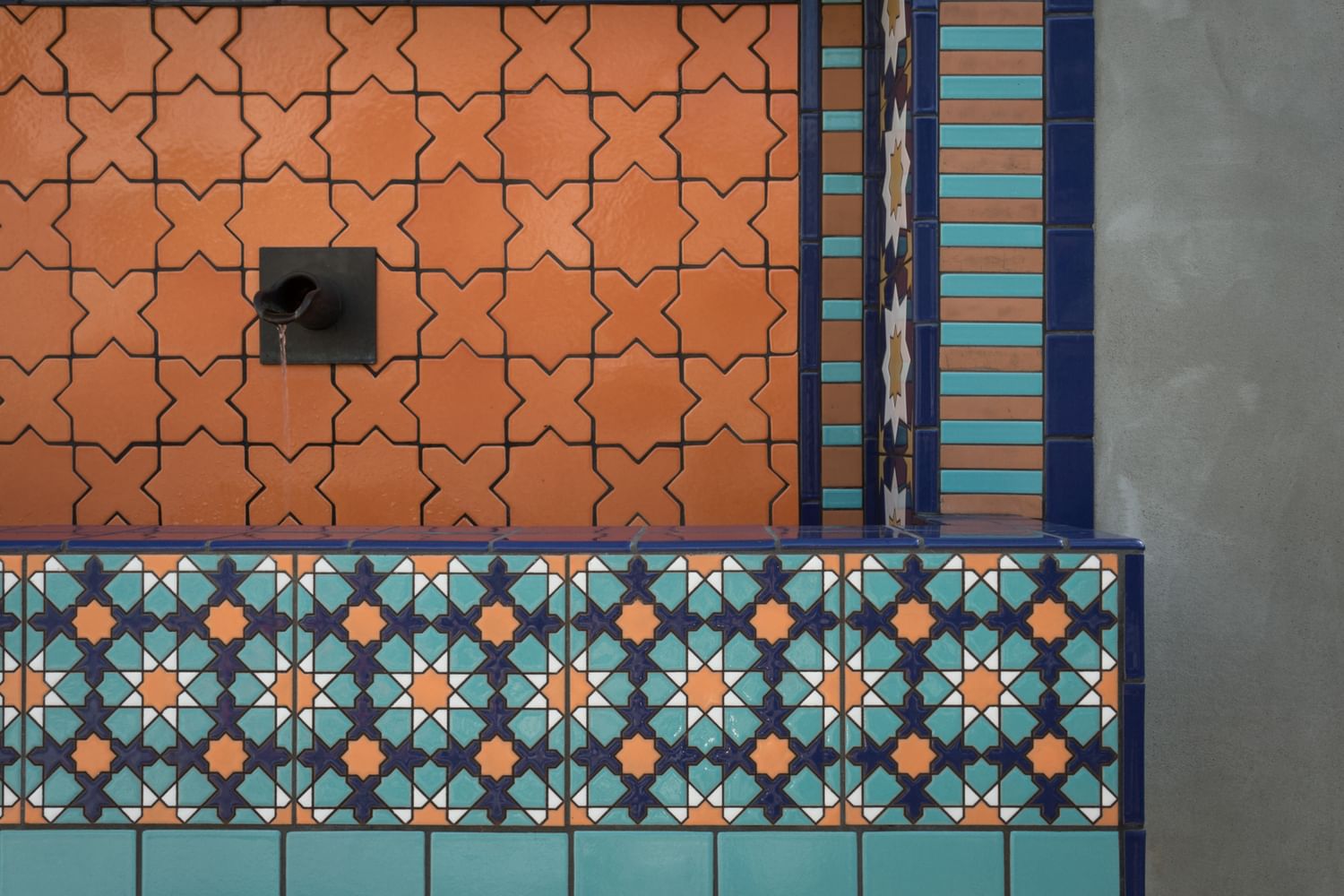
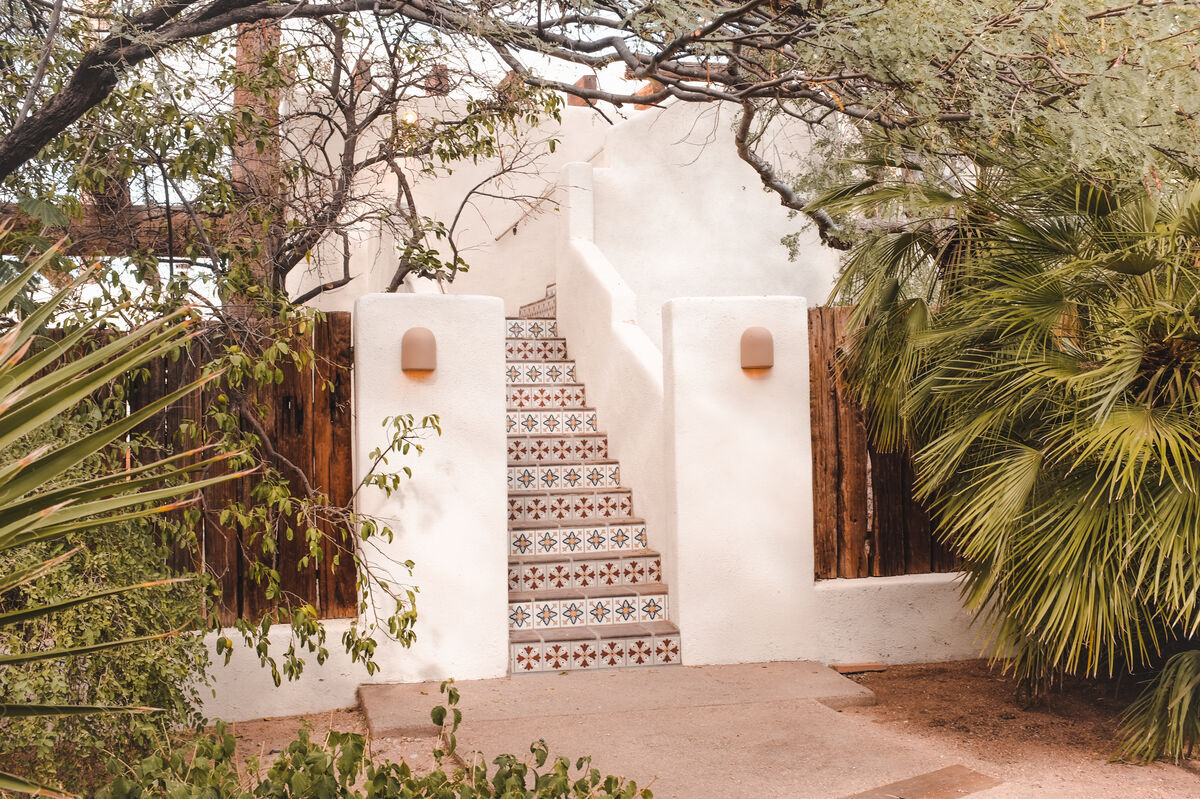
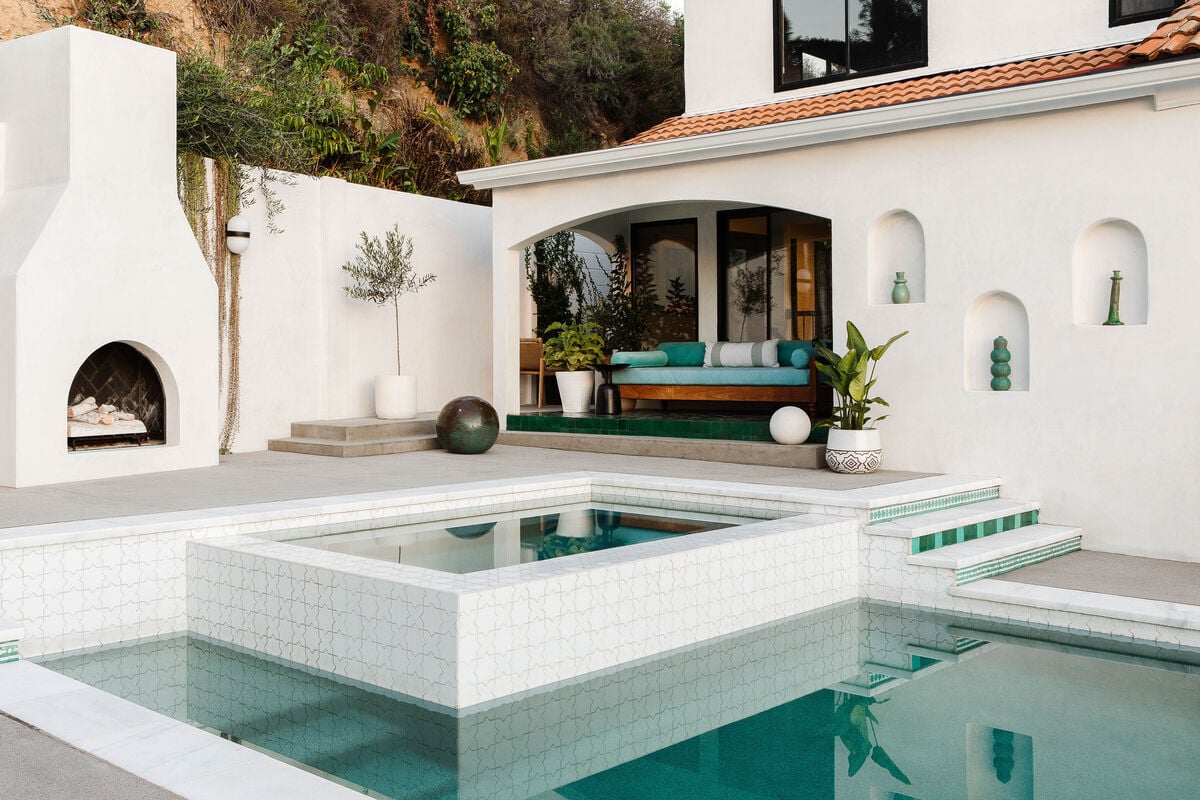
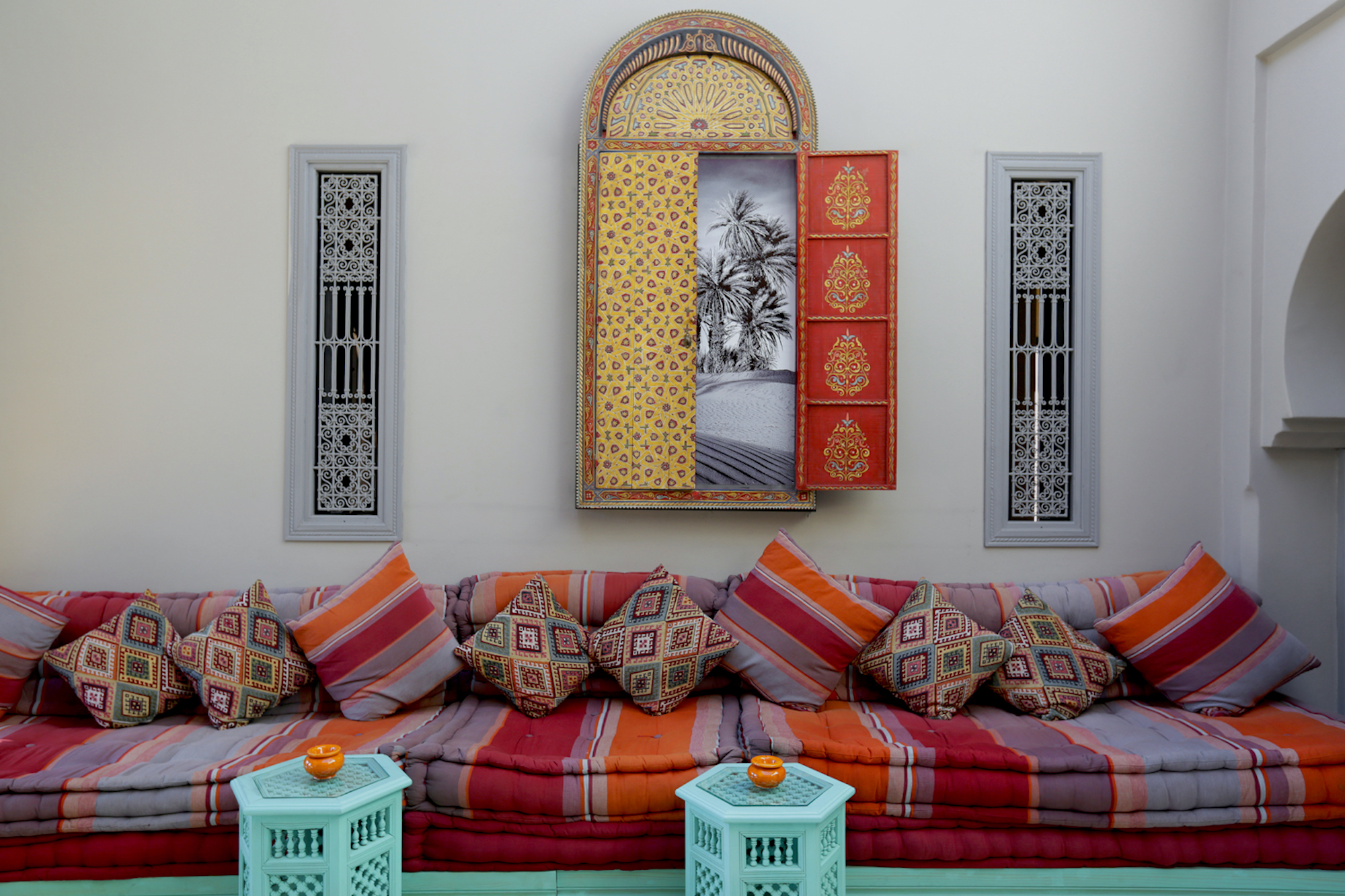
Terracotta Floors or Stone underfoot
One of the hallmarks of Mediterranean living rooms is natural stone flooring. Materials such as terracotta tiles, travertine, or limestone are popular choices, as they provide a cool and durable surface that is both practical and beautiful.
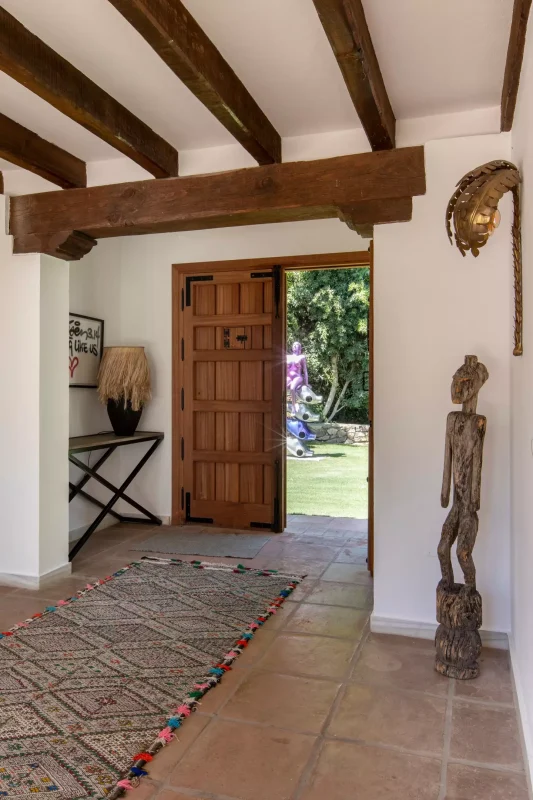
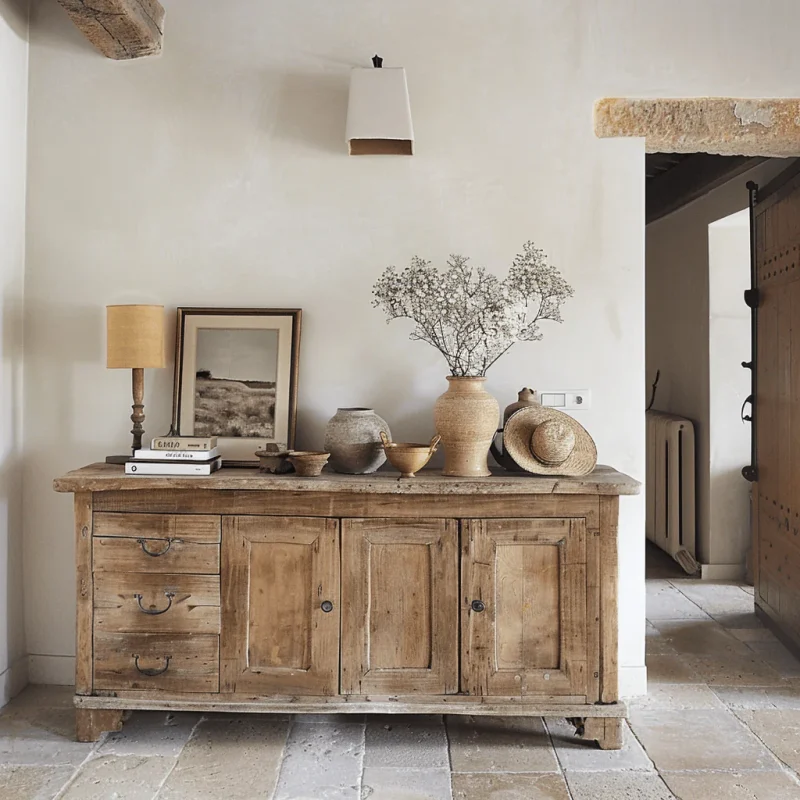
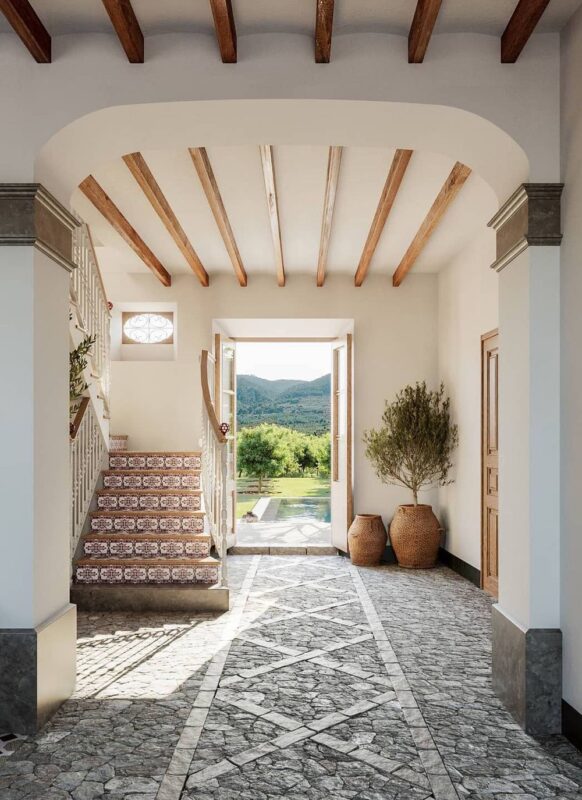
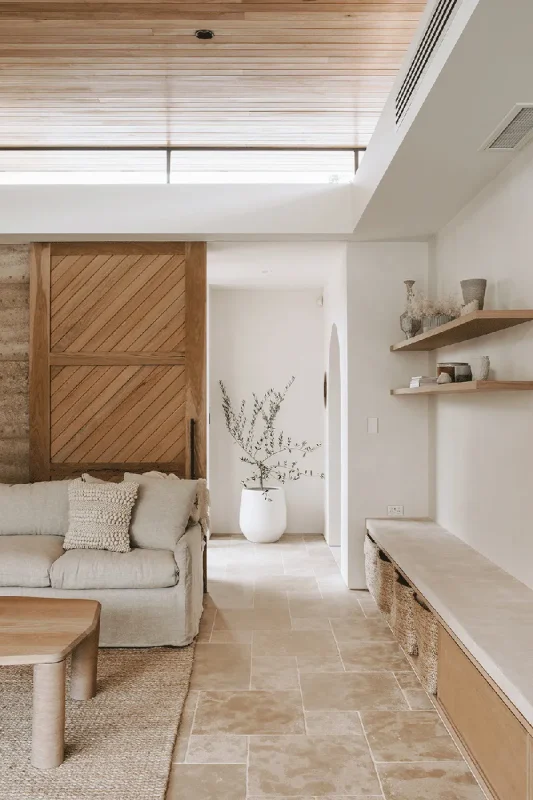
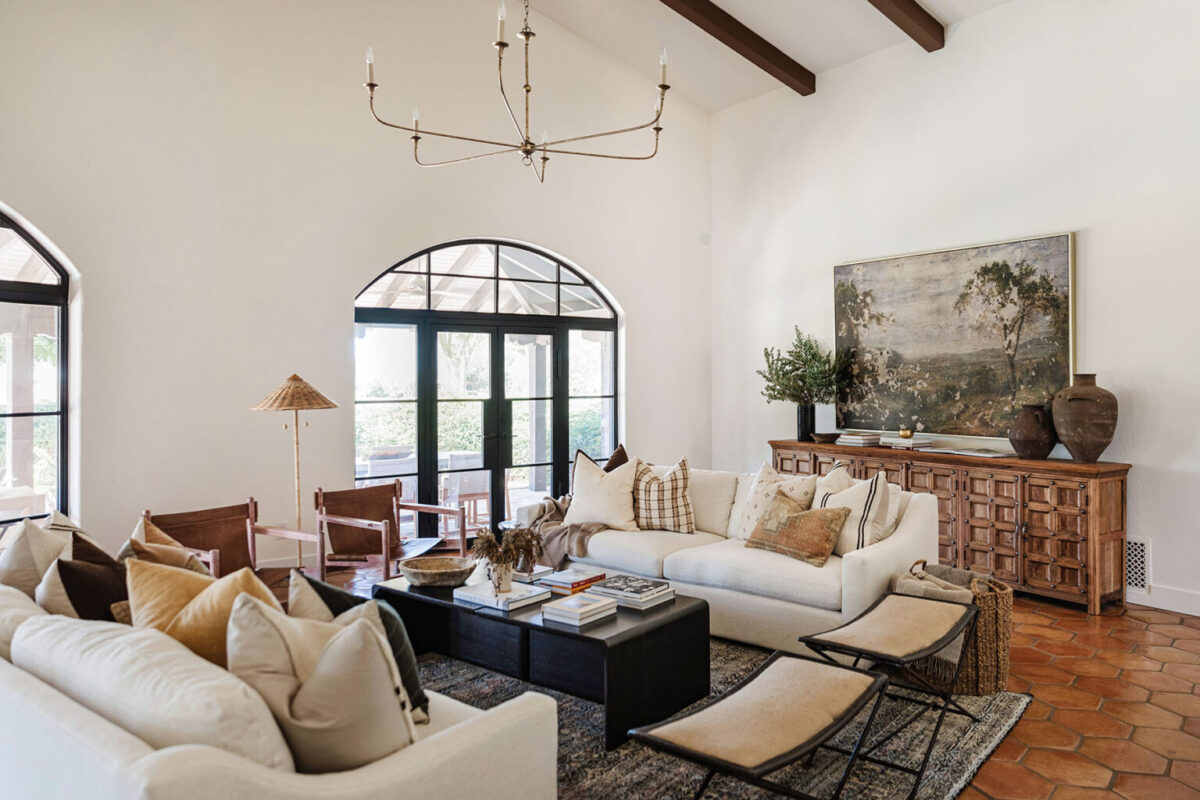
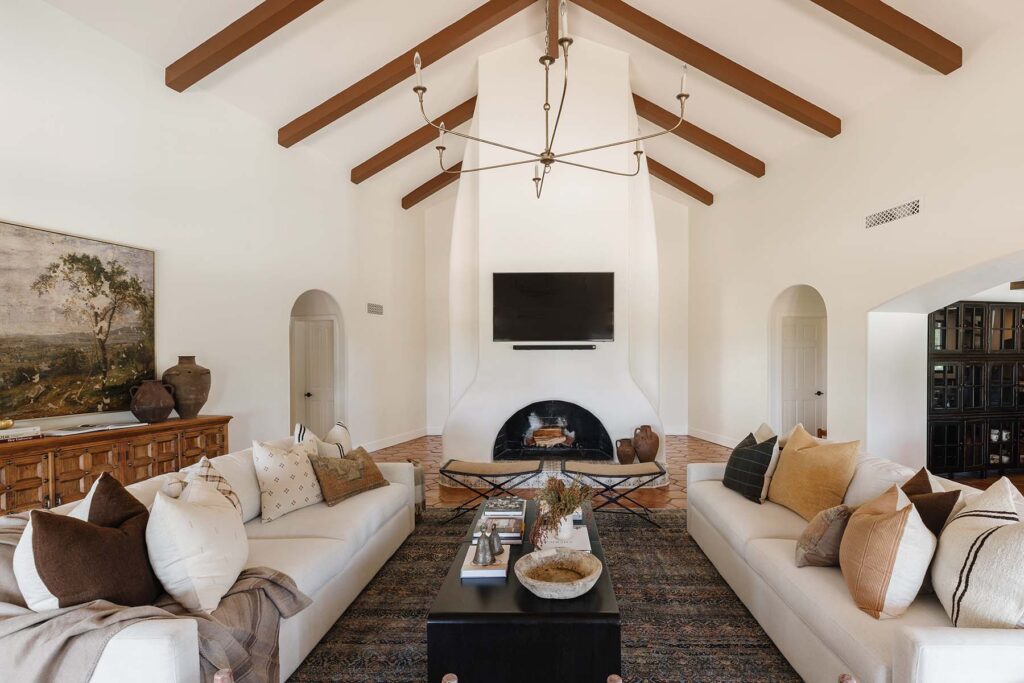
Perfectly planned outdoor living
Whether it is Colonial Spanish or Modern Minimalist Mediterranean Architecture, continuing stone flooring or walls creates a seamless flow between indoor and outdoor living areas. We can easily say that most of the time, the outside material continues inside. A natural flow between interior and exterior areas is signature to the Mediterranean style.
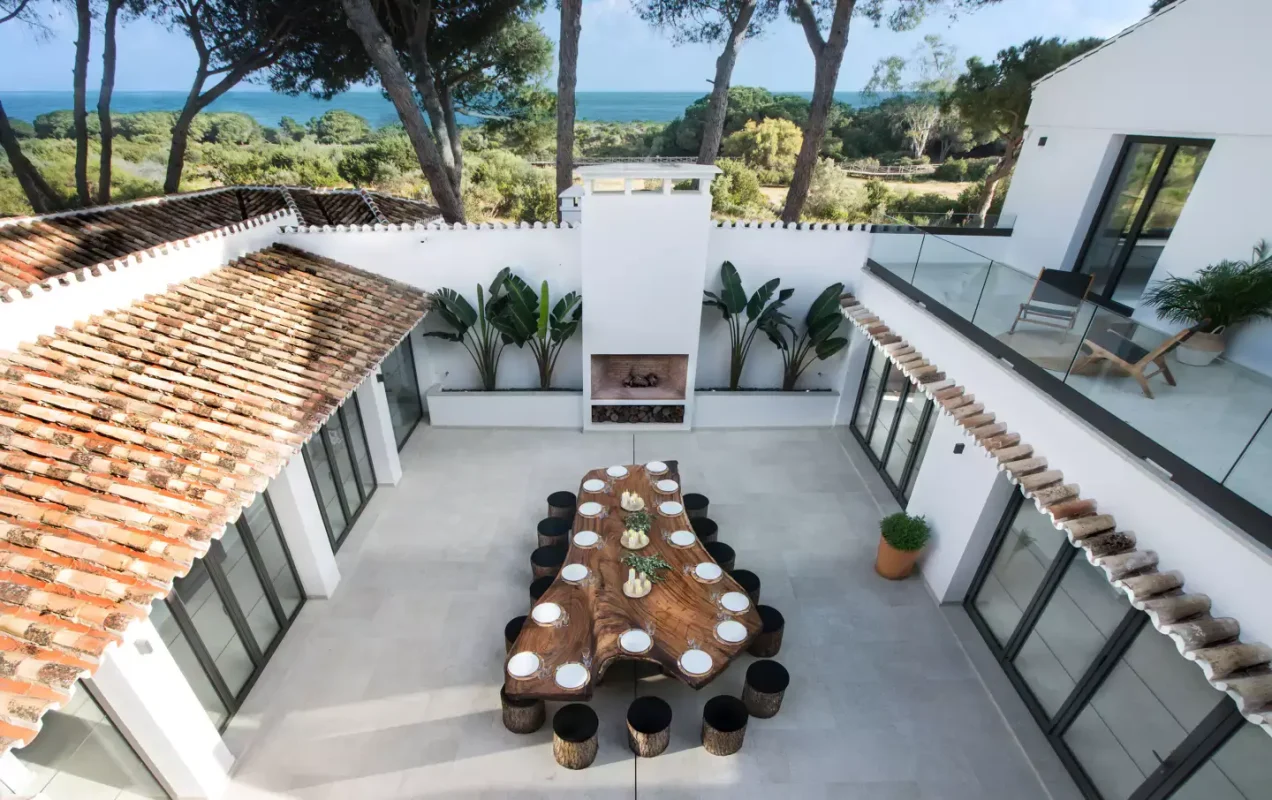
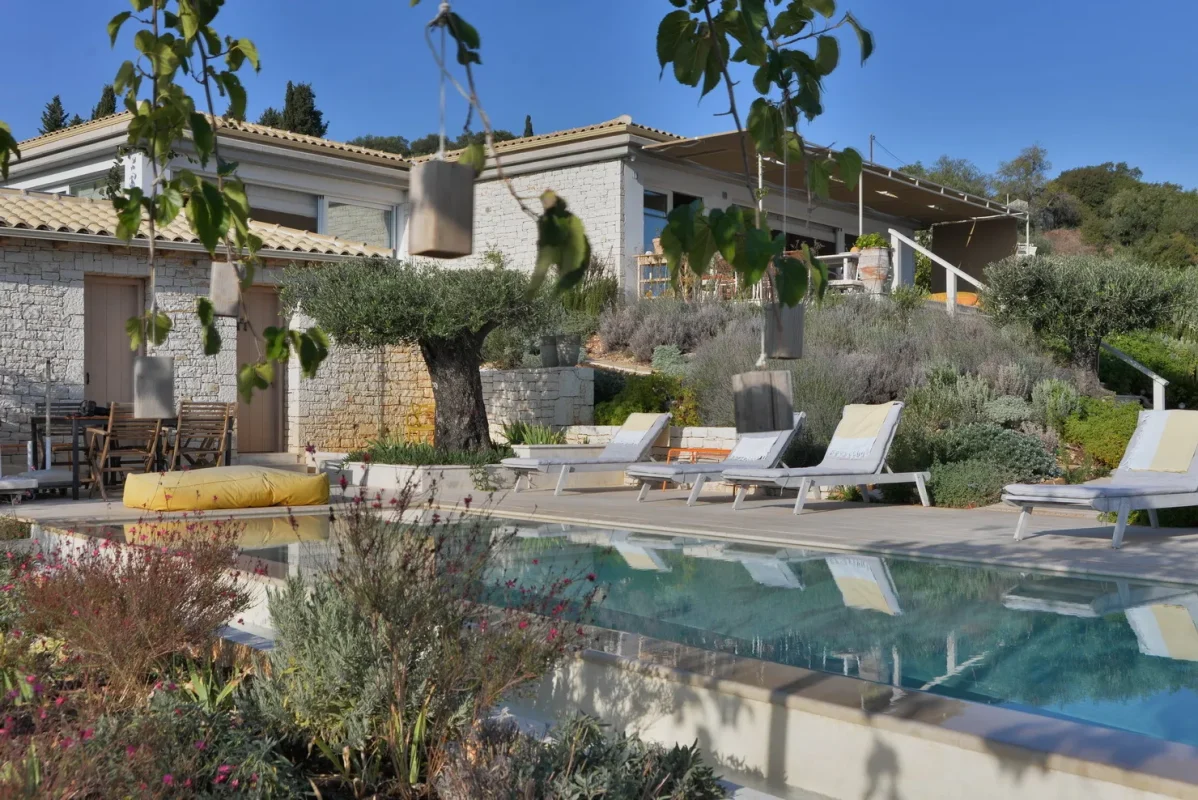
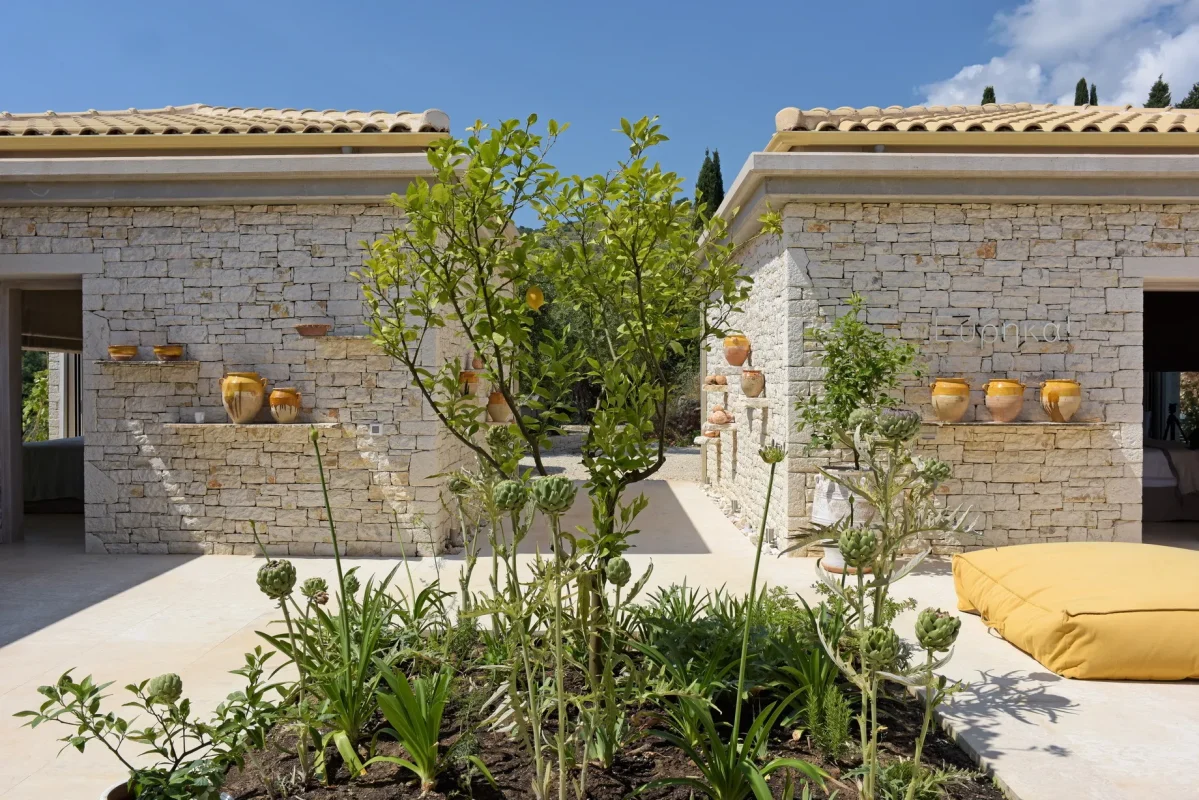
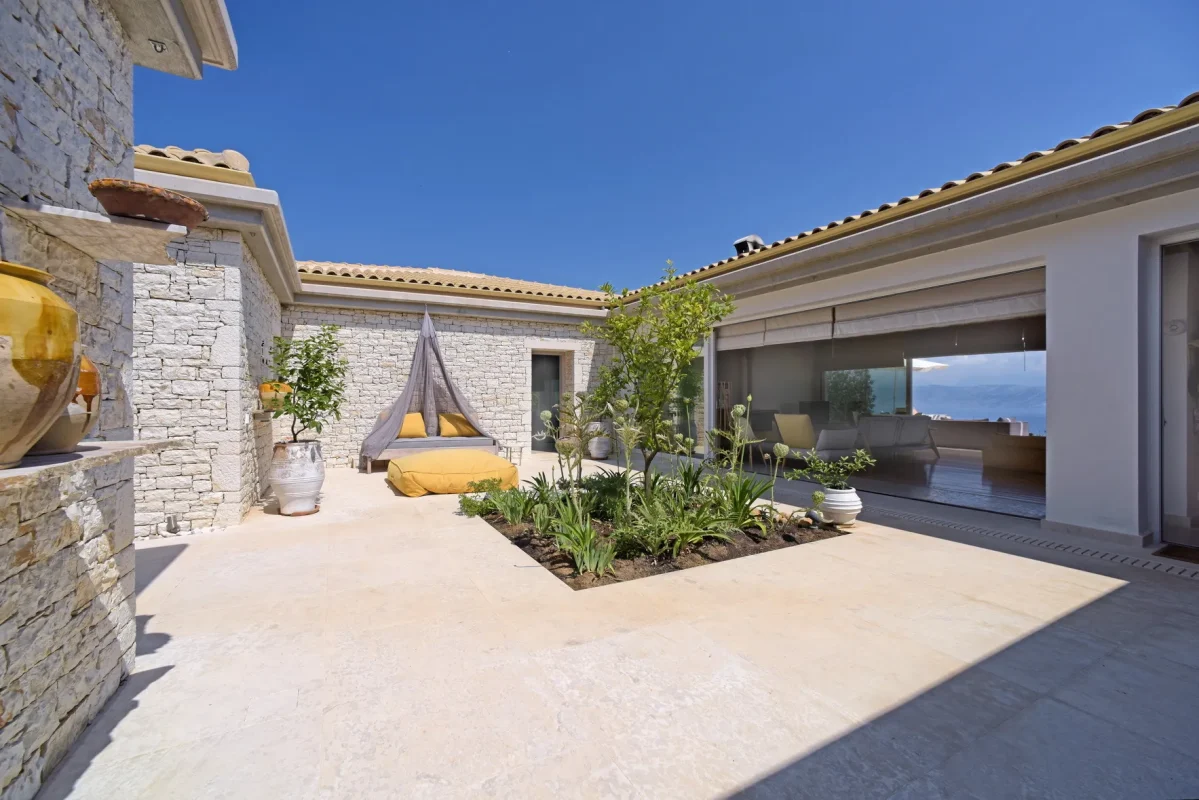
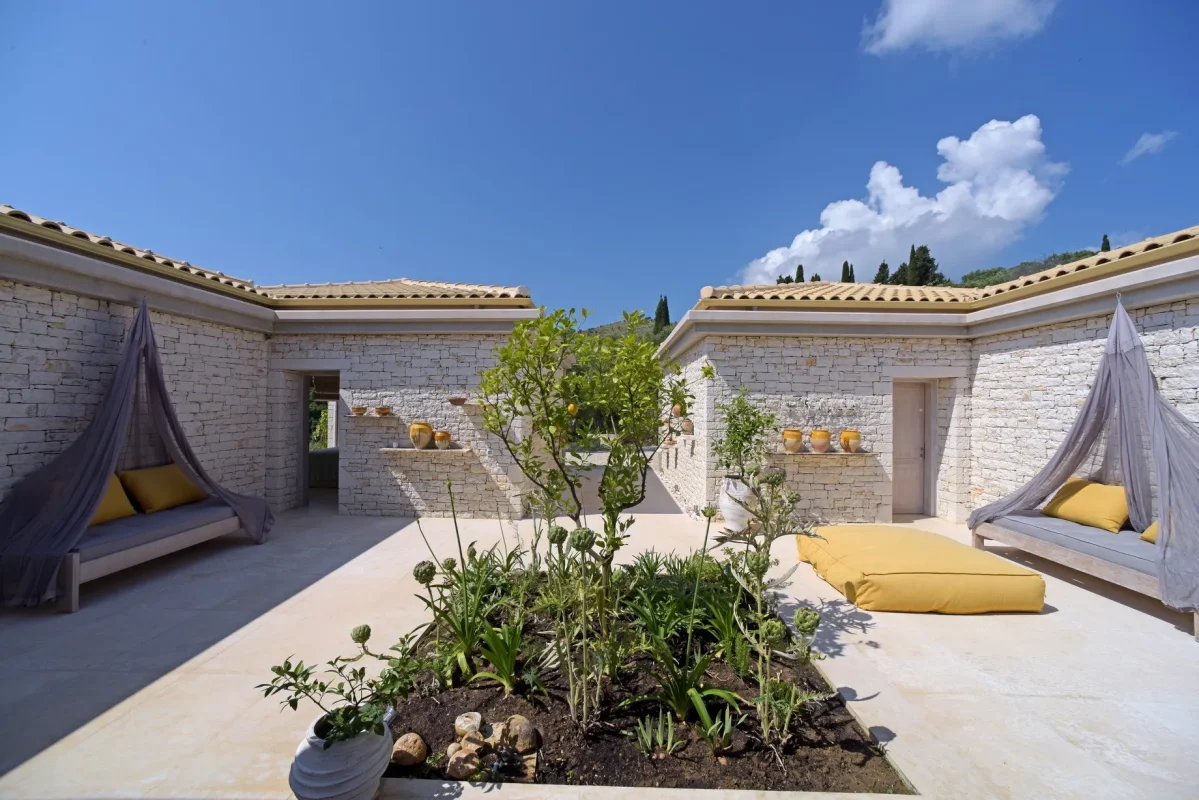
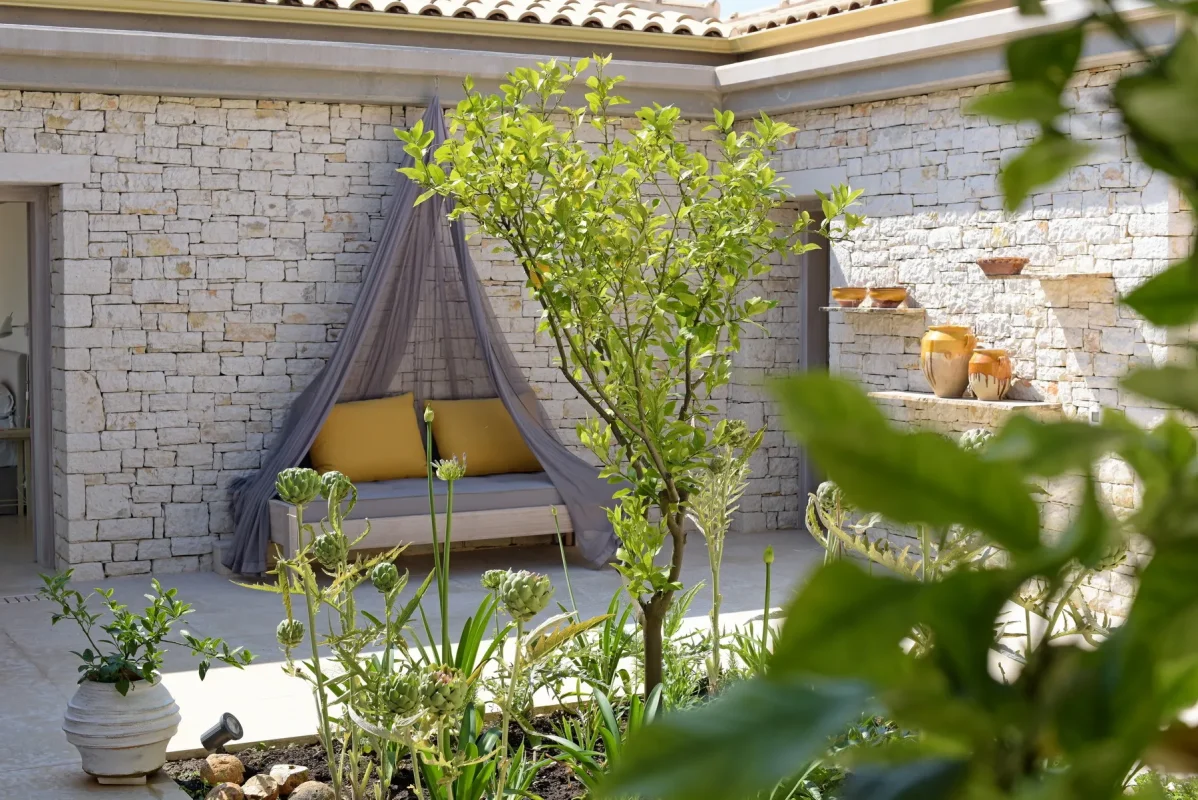
Take a look at the Câlin Valreas house in France, overlooking a landscape of mountains and rolling vineyards. Calin Valreas House by Contekst is a perfect example of minimal Mediterranian Architecture.
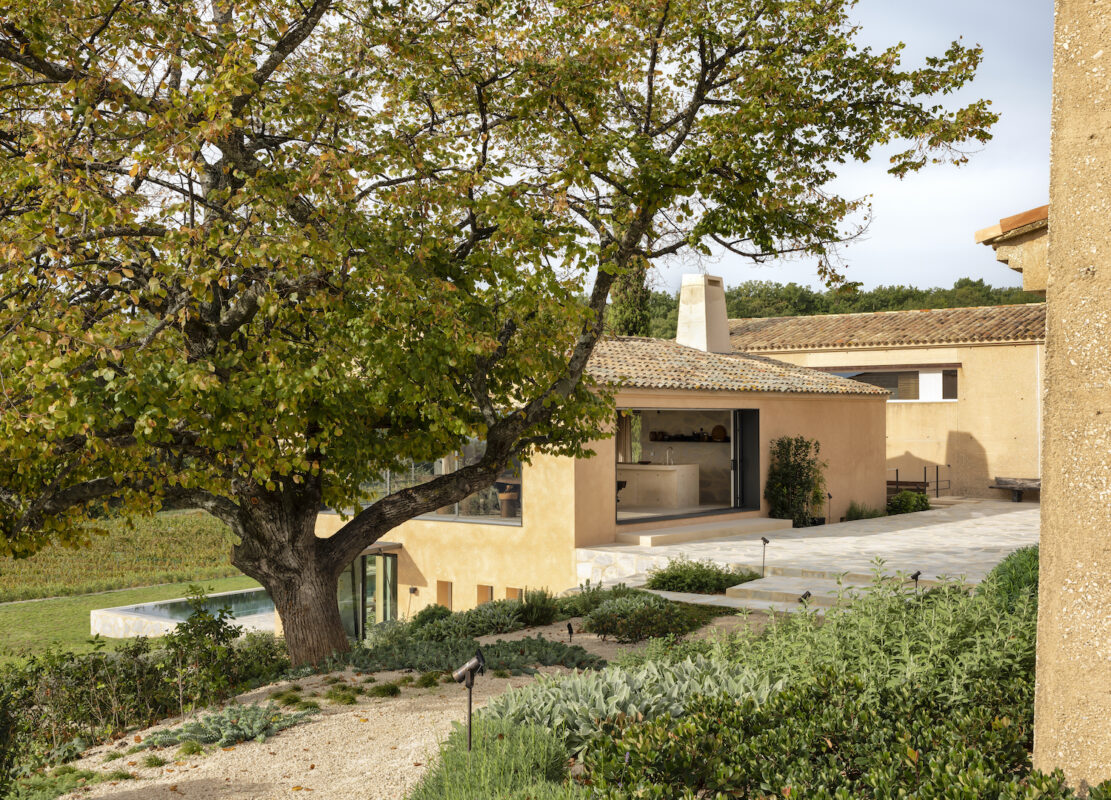
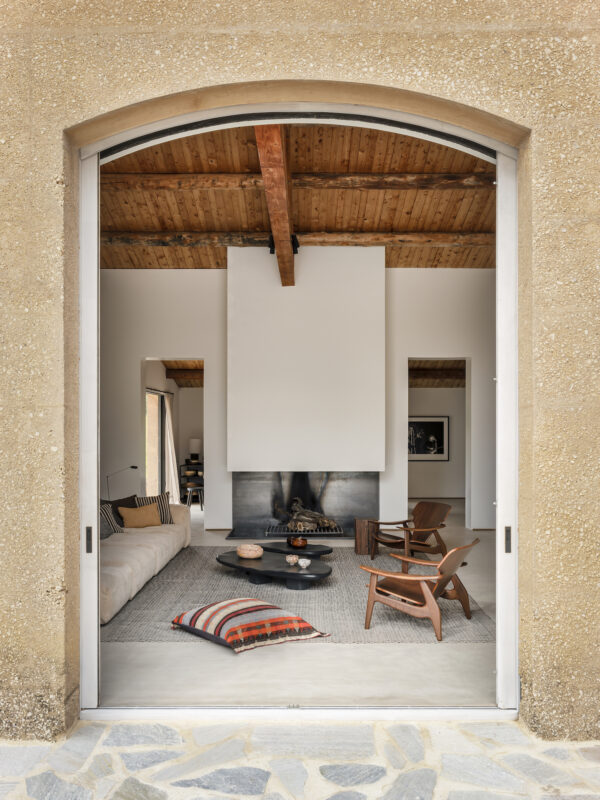
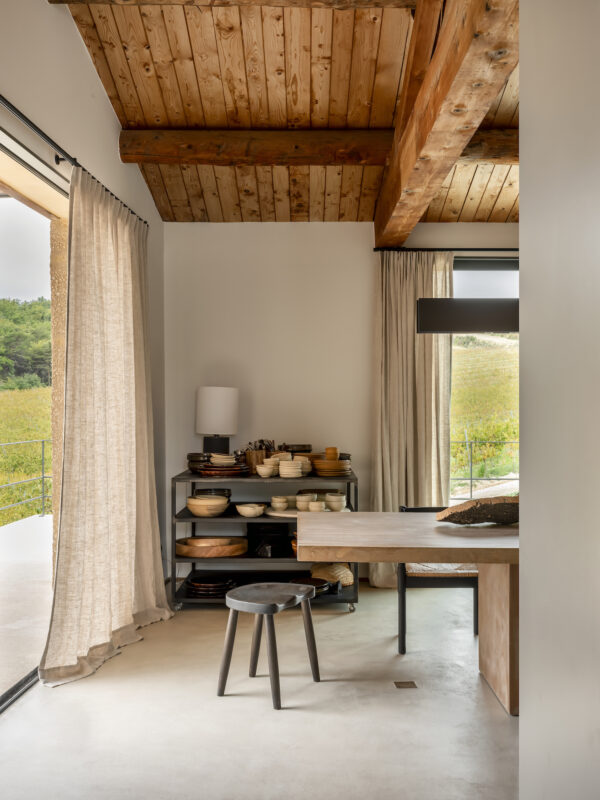
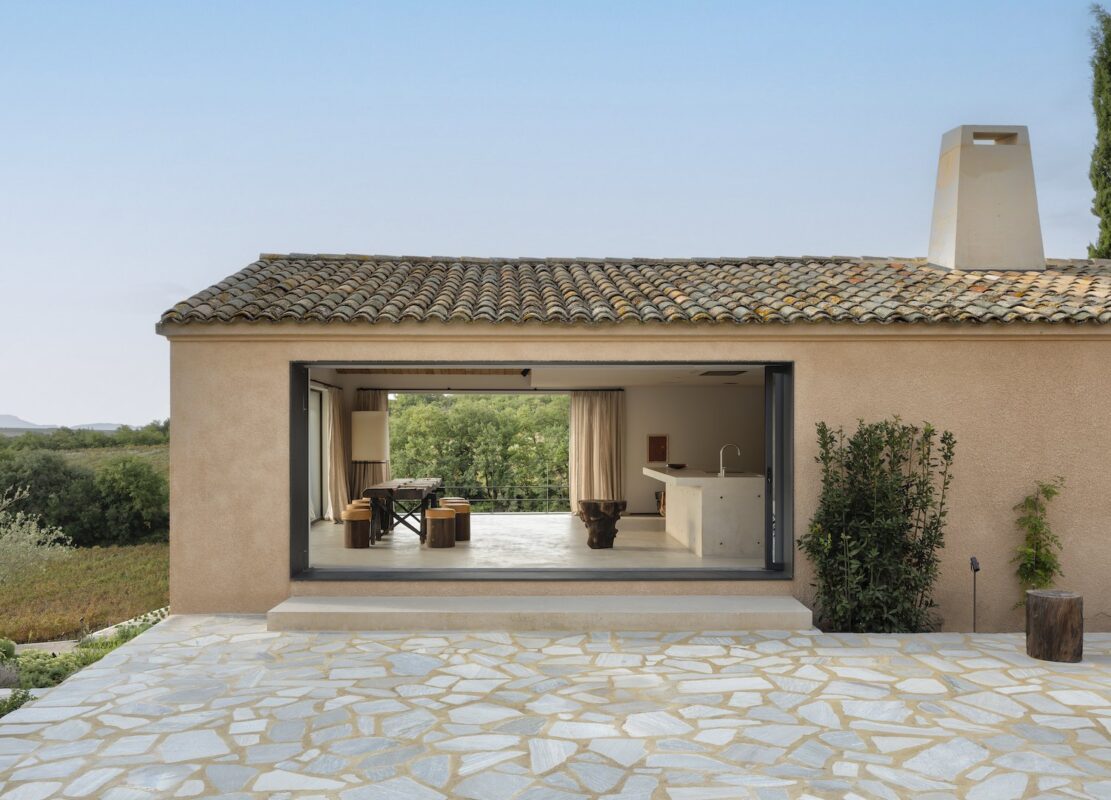
Mediterranean Mosaics & Patterned Tiles
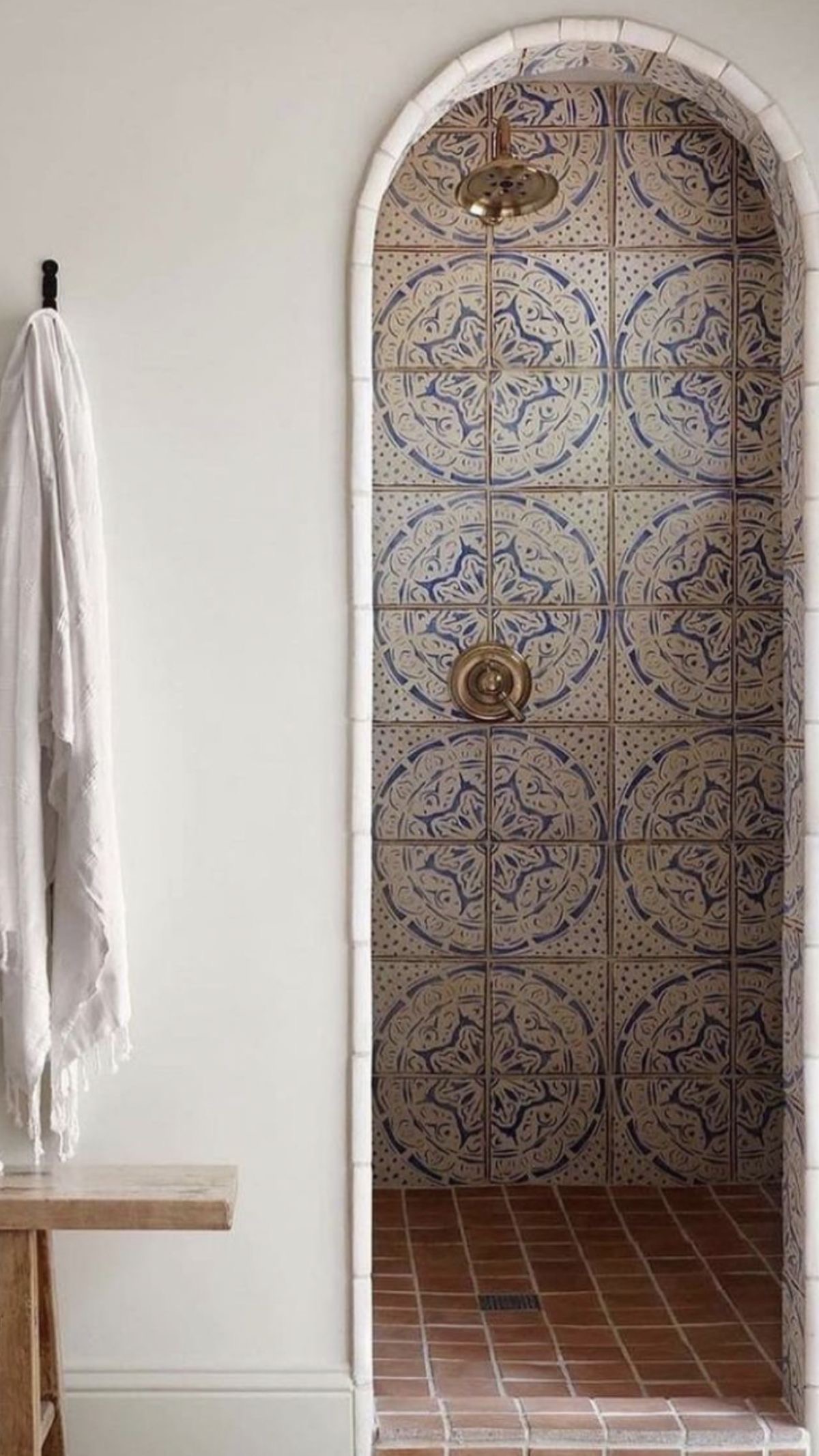
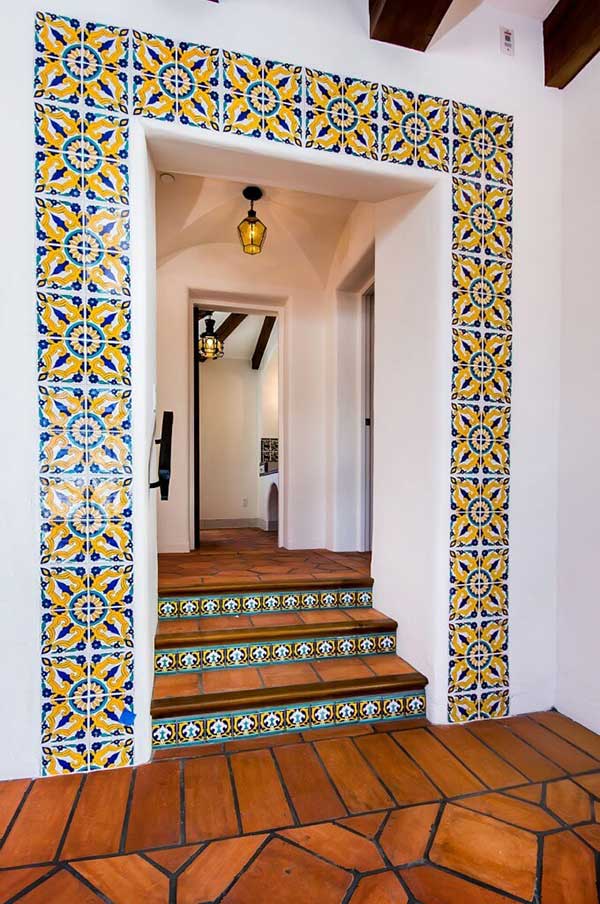
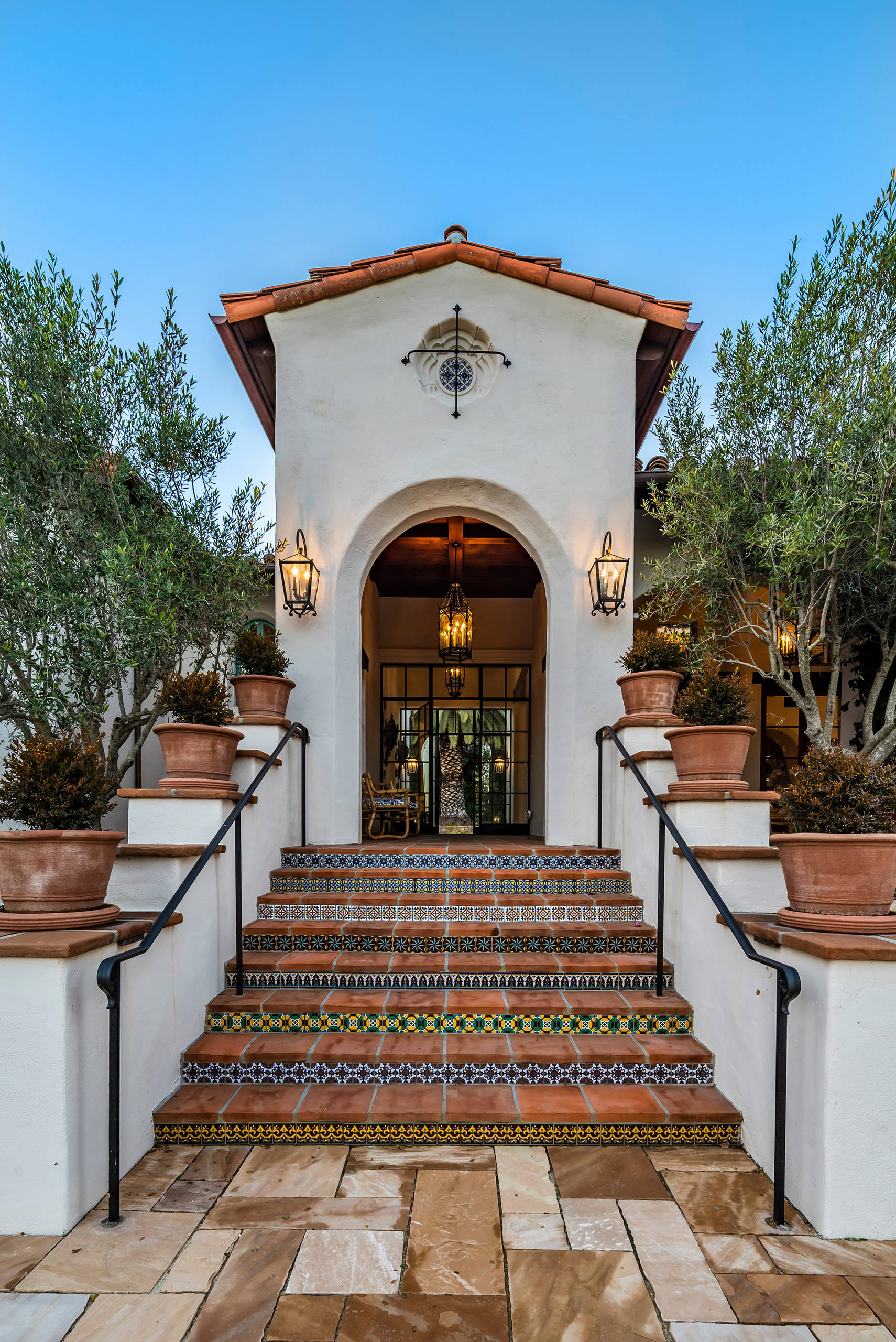
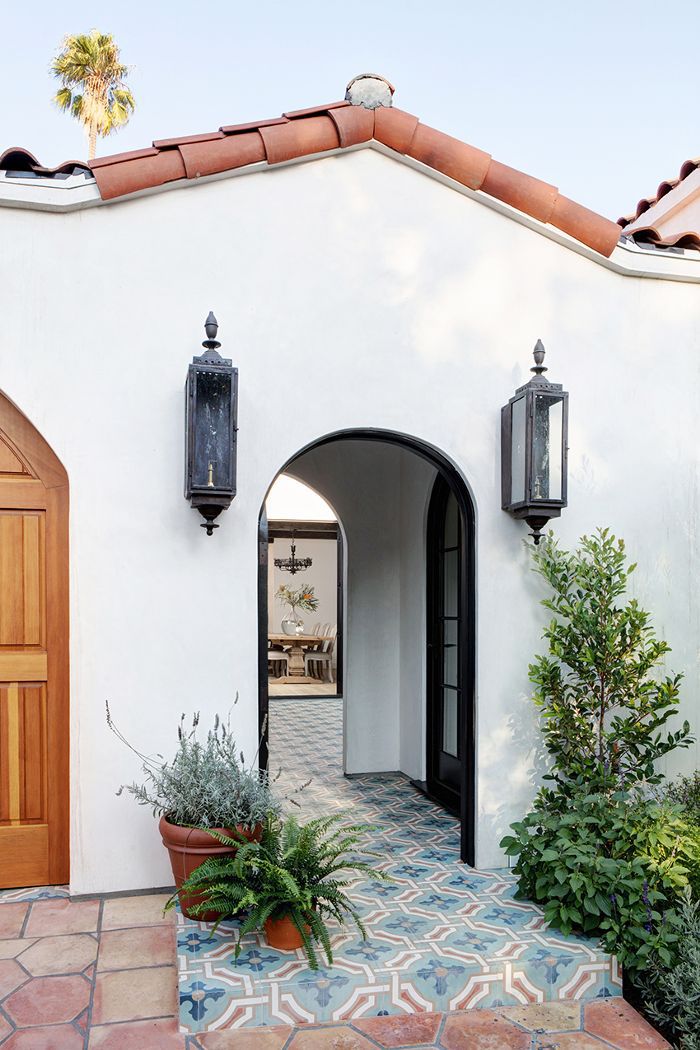
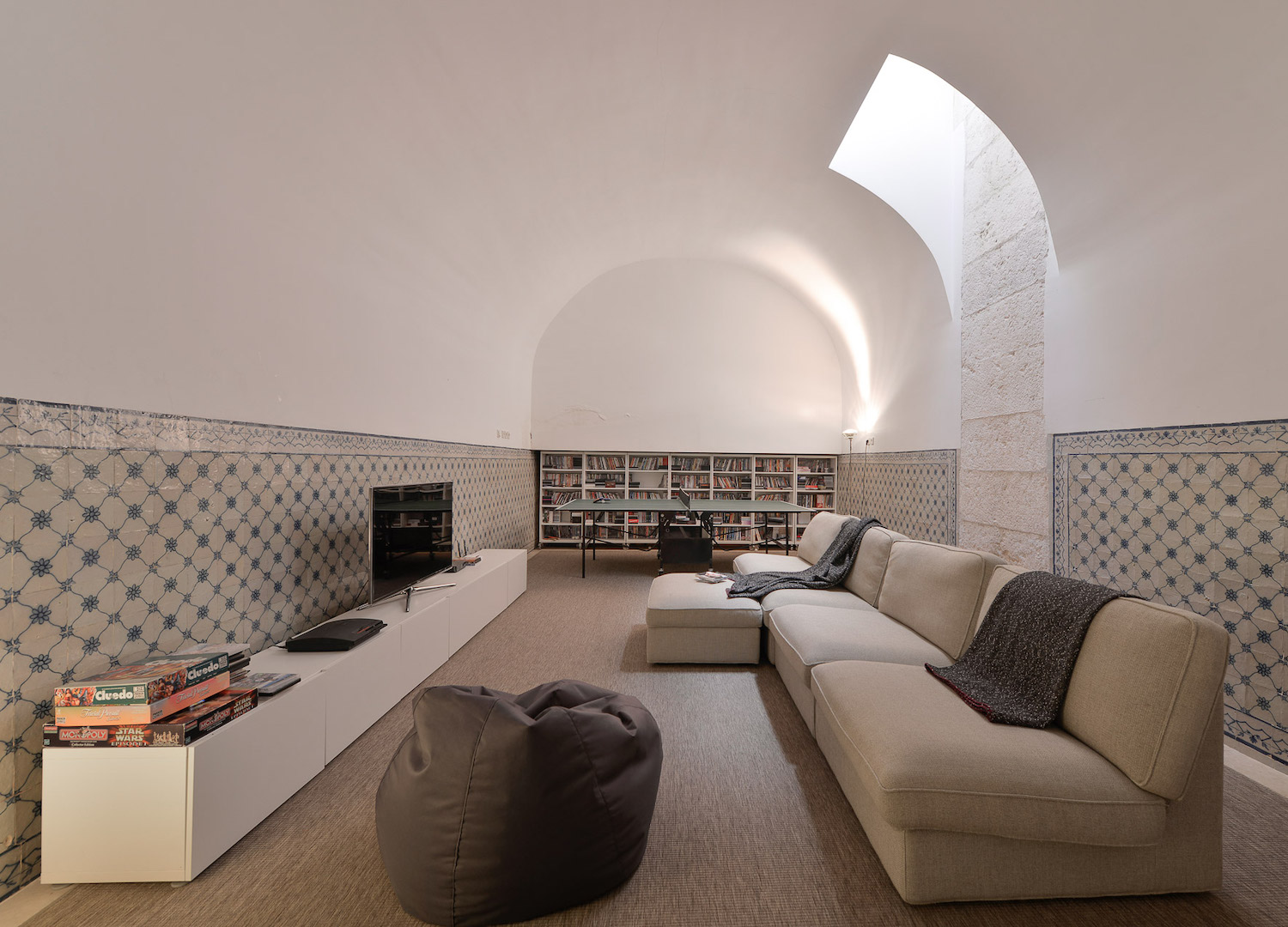
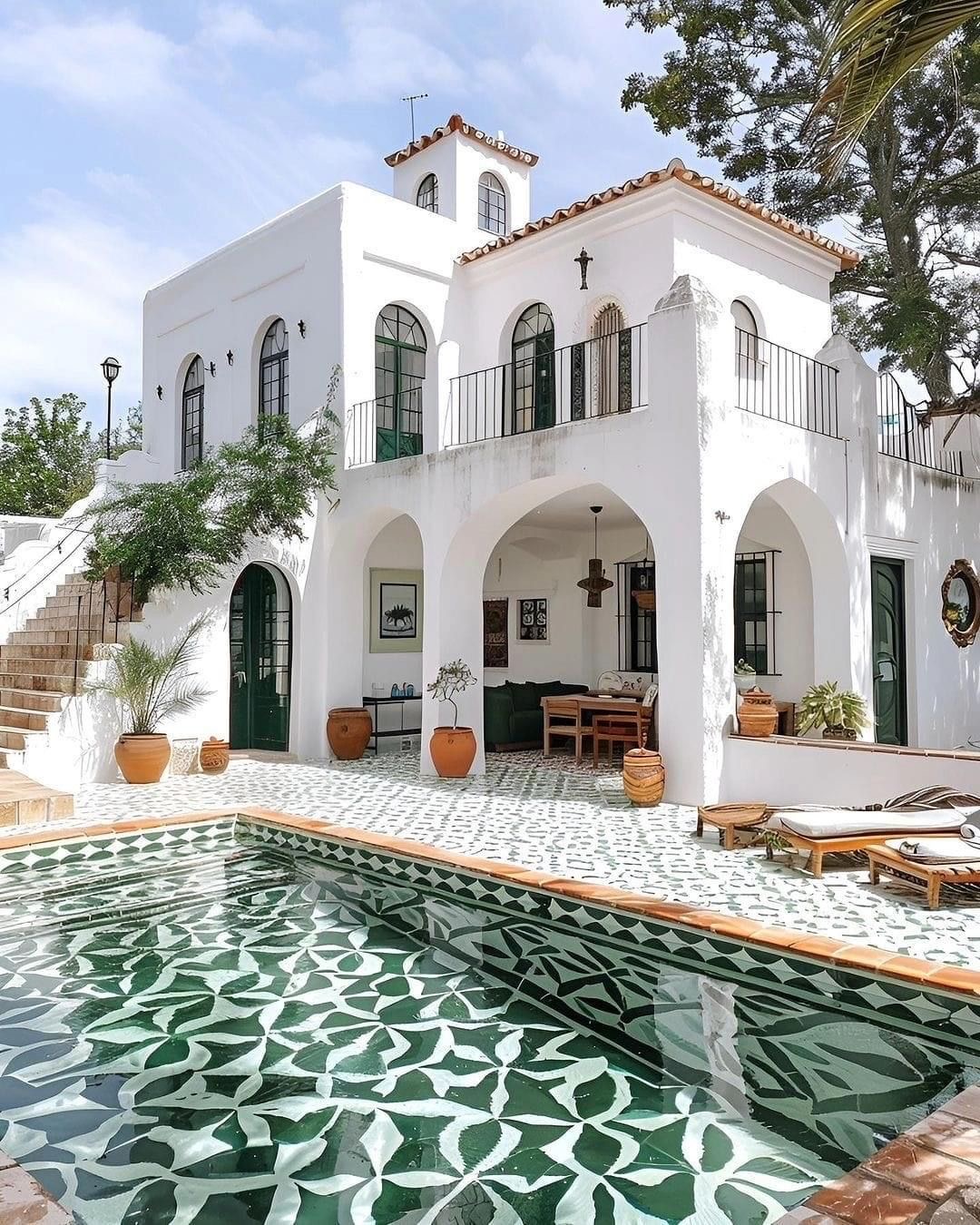
Plaster Walls, Textured Walls & Exposed Wood Beams
Plaster walls are another signature element of Mediterranean design. The textured, matte finish of plaster adds depth and interest to the walls, creating a rustic and authentic feel. Plaster can be left in its natural state or painted in a soft, muted color to complement the overall palette of the room.
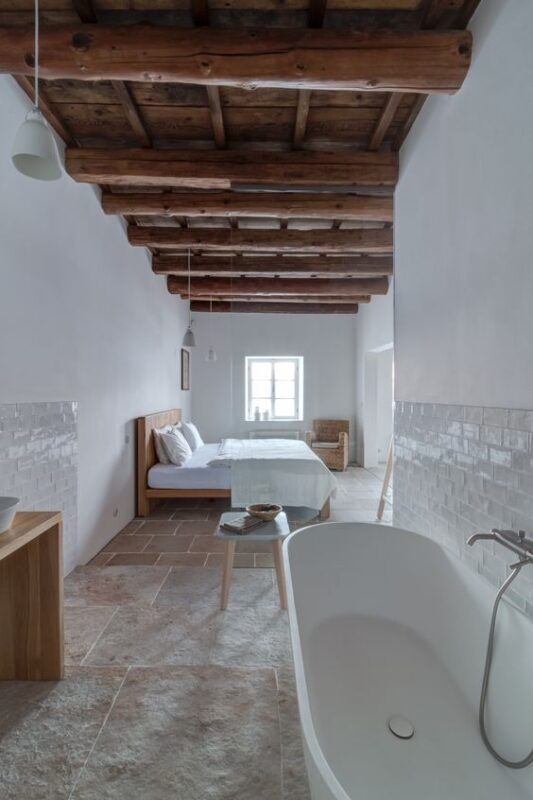
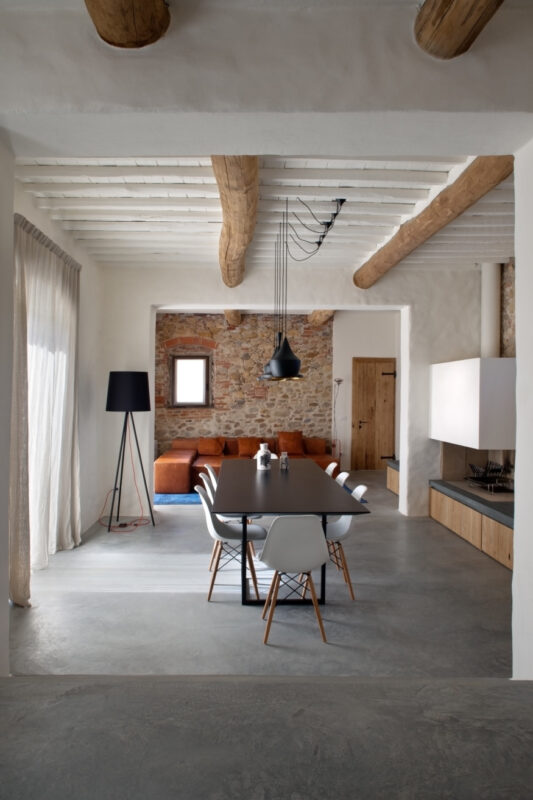
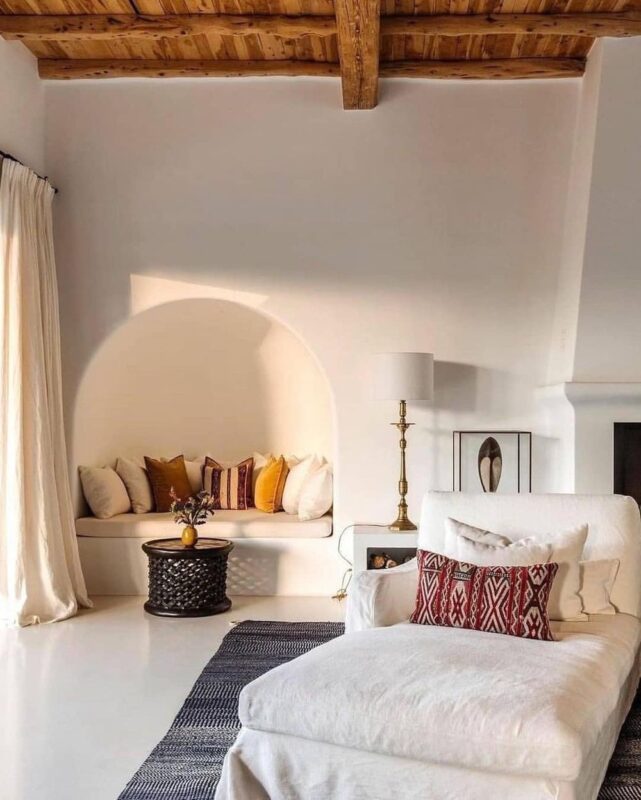
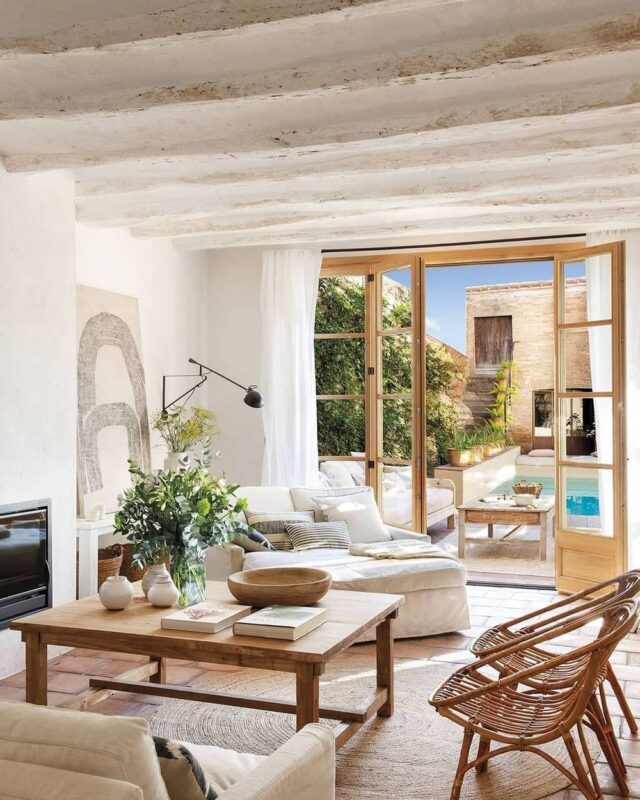
Wrought-iron details
Wrought iron which gives the feel of the Mediterranean Architecture, shows itself in the exterior facade as in door, windows and balconies. Mediterranean interior design also embraces both cast and wrought iron; interior door grills, light fixtures, railings of the staircases and other antique metal framed furniture and touches fits in perfectly.
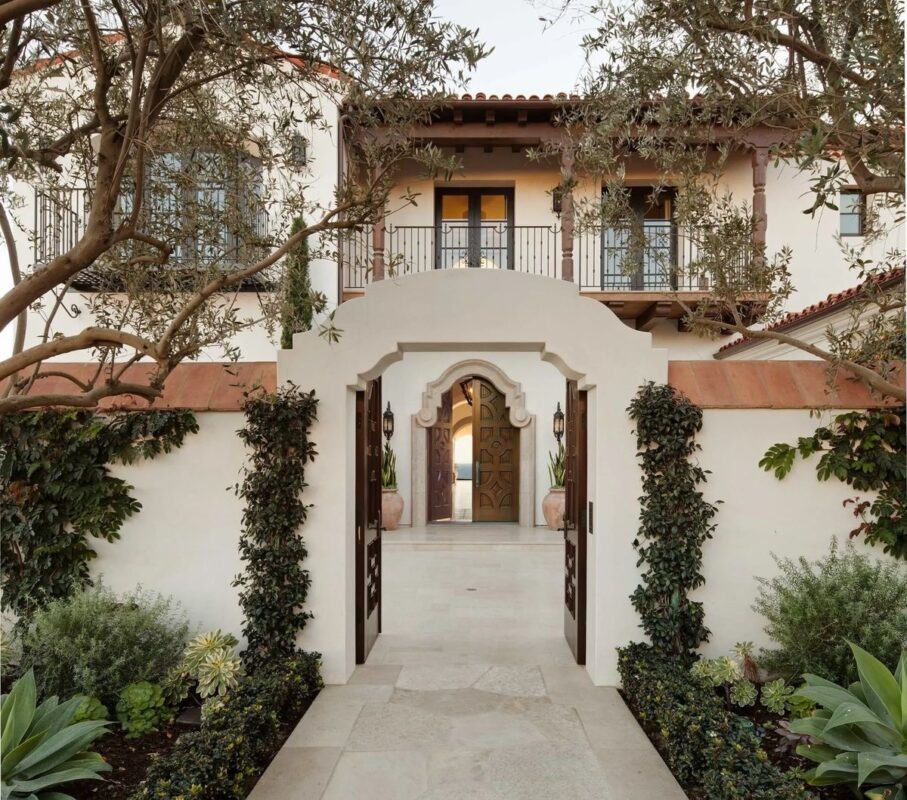
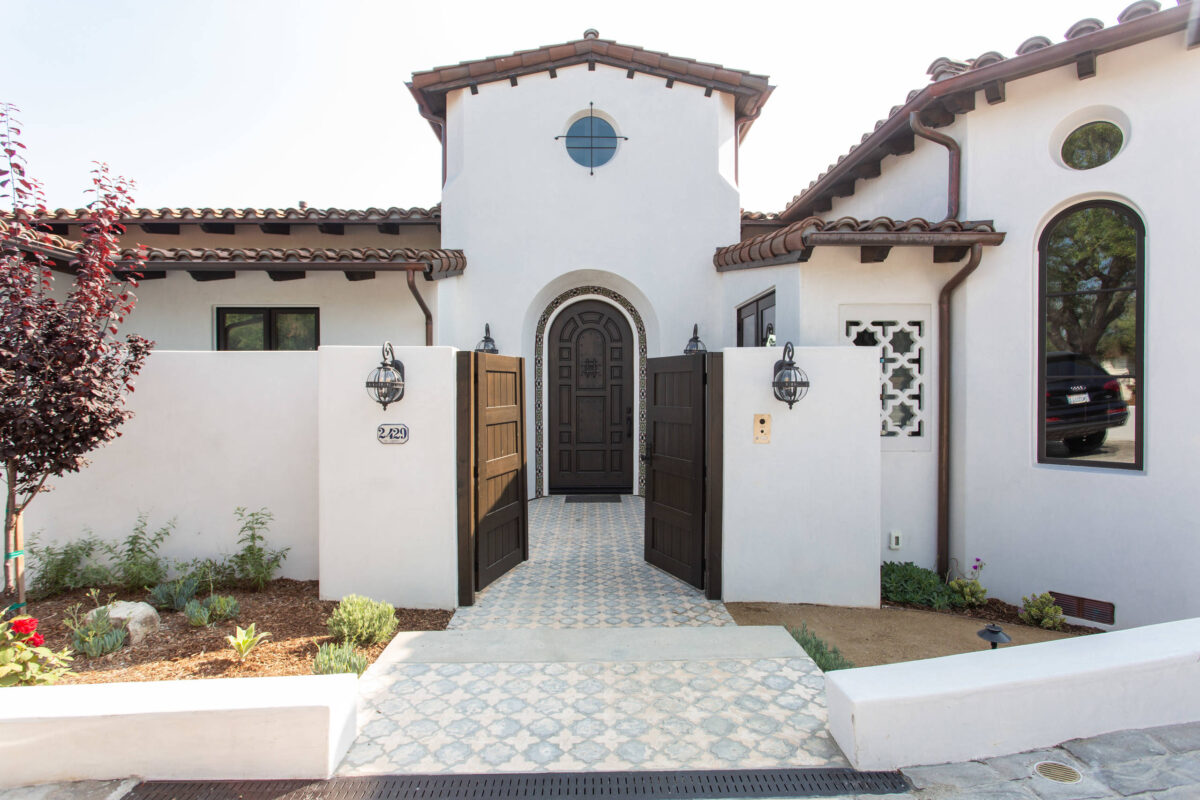
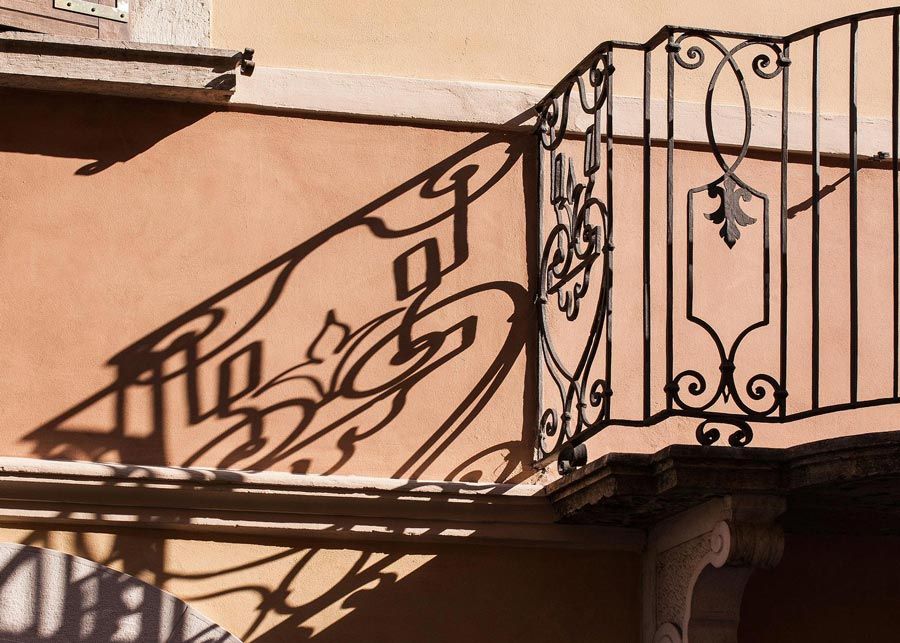
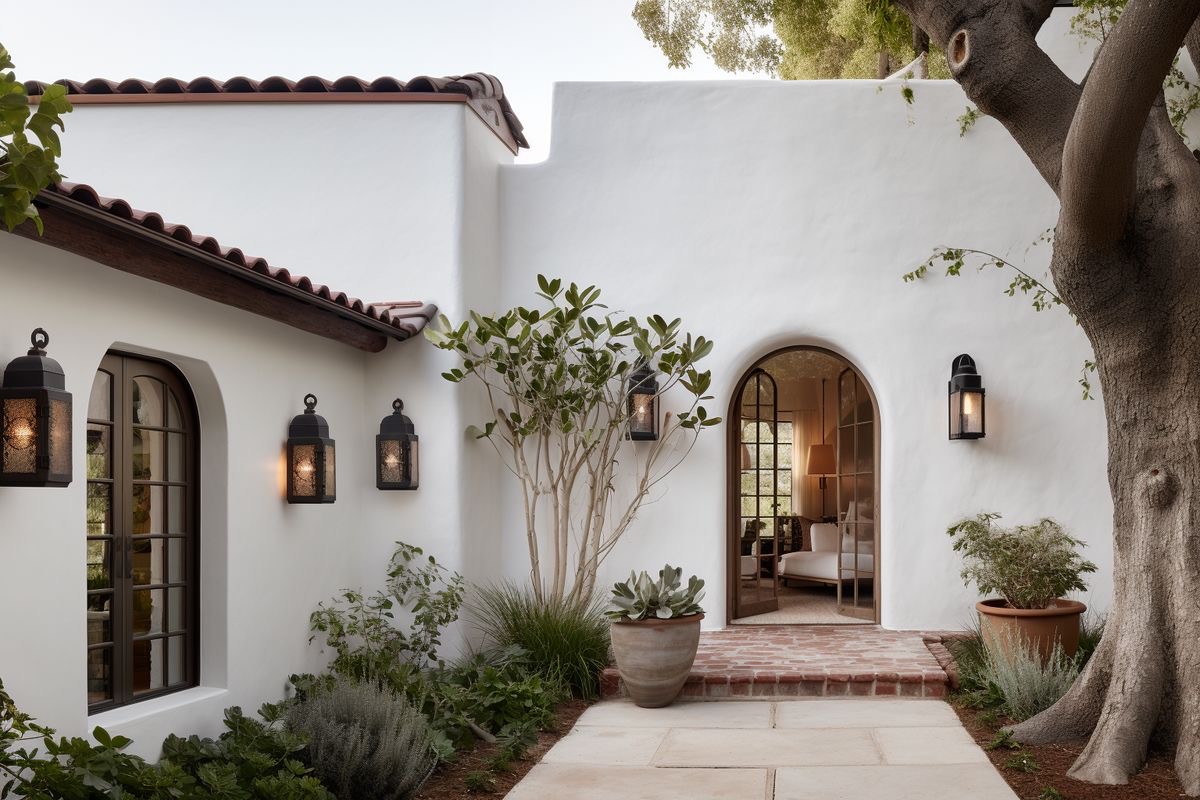
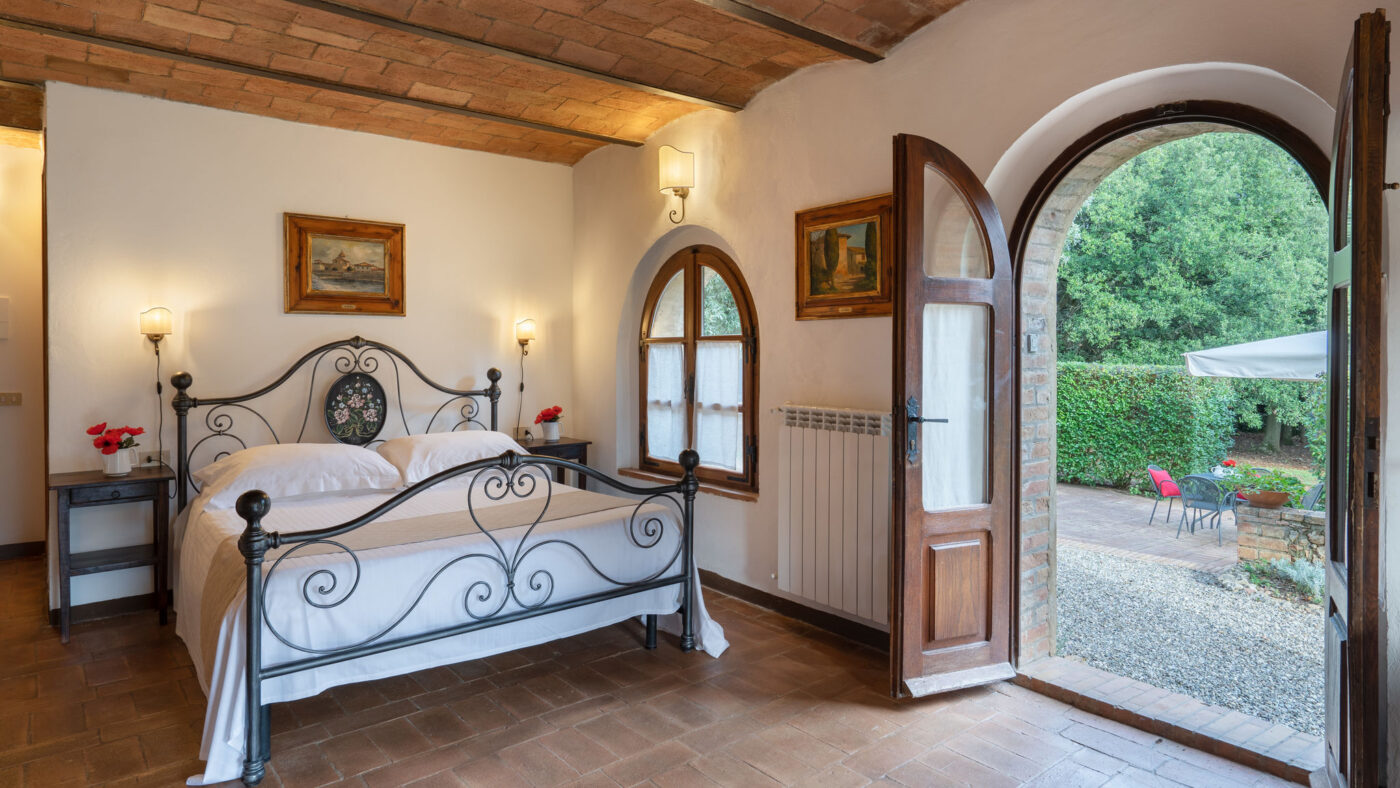
Low Seats
When it comes to furniture, Mediterranean living rooms priority is comfort and functionality. A comfortable low sofa or loveseat is the centerpiece of any Mediterranean living room. Choose a piece with a simple, classic silhouette that comes with natural fabrics such as cotton, linen, most importantly, in neutral colors such as; cream, beige, or light gray. Then pair your sofa with one or two cozy rattan armchairs.
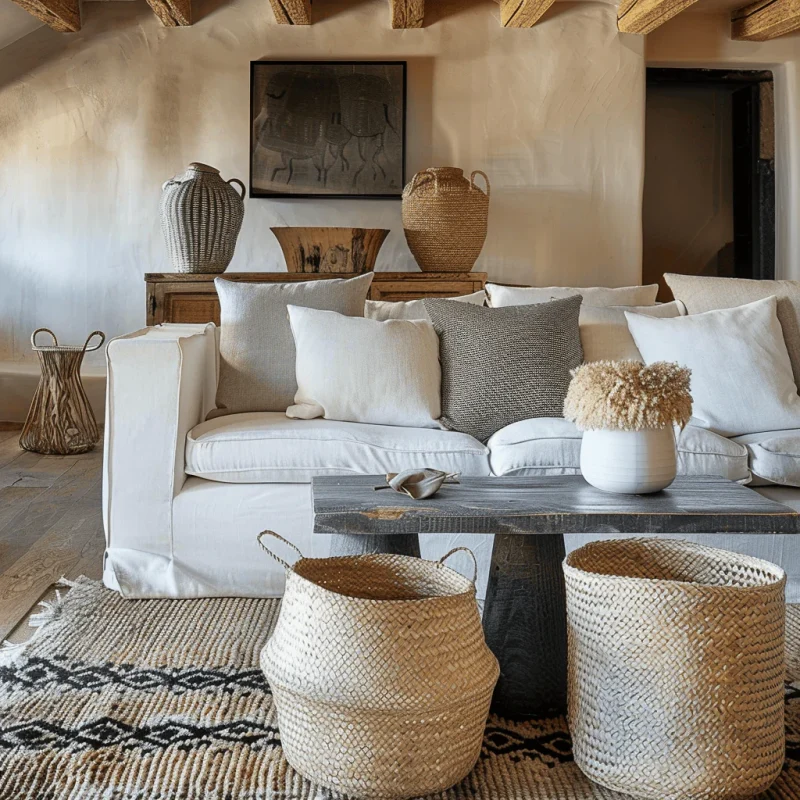
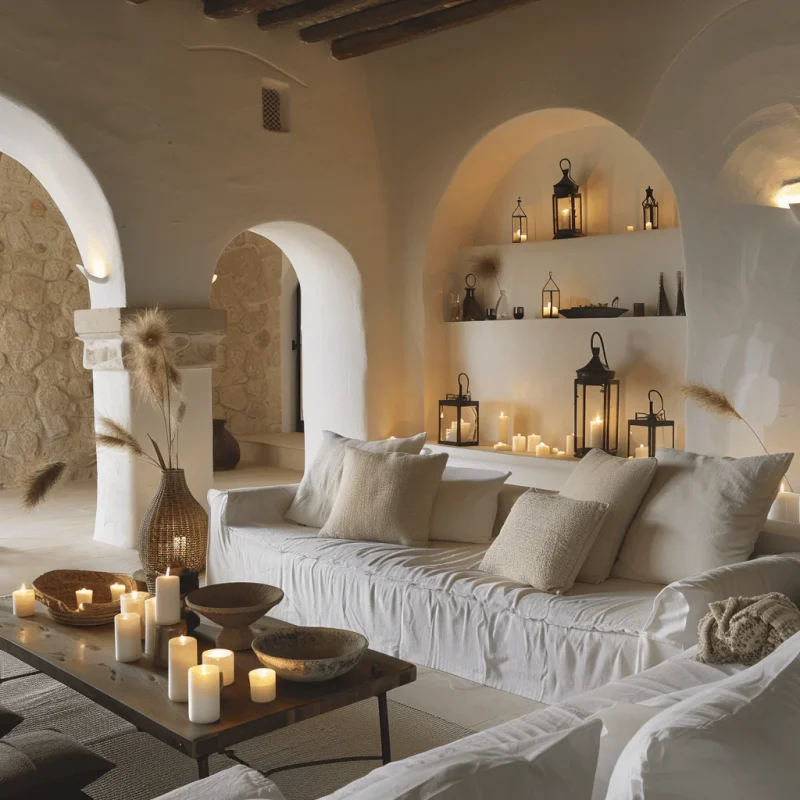
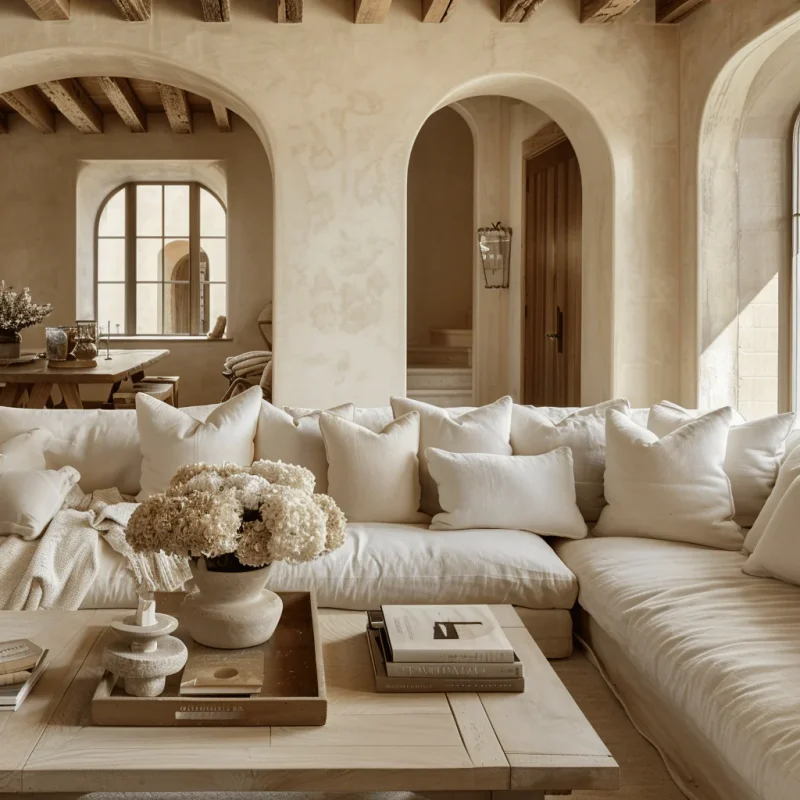
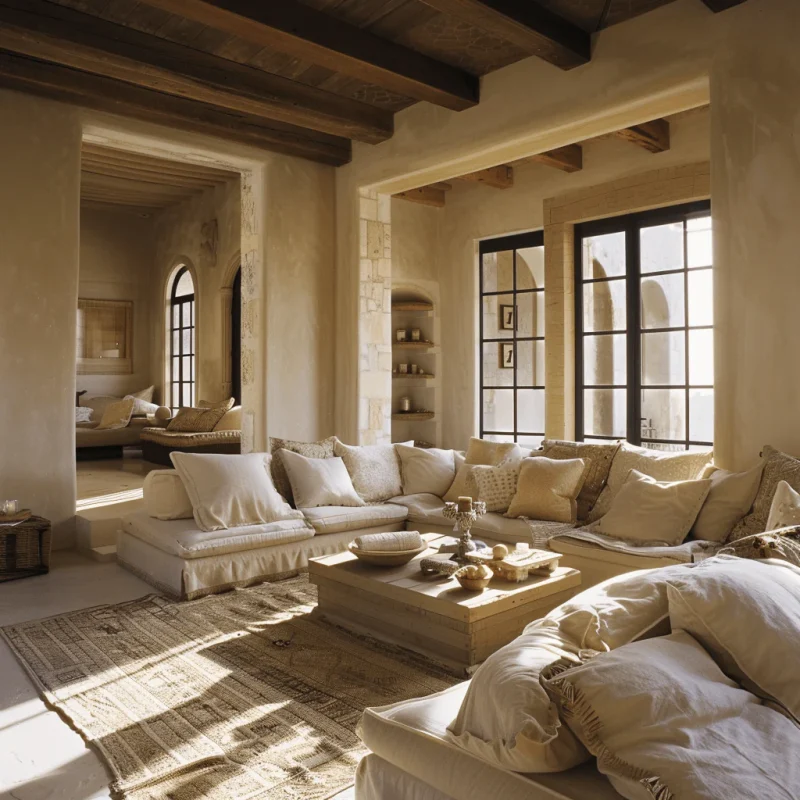
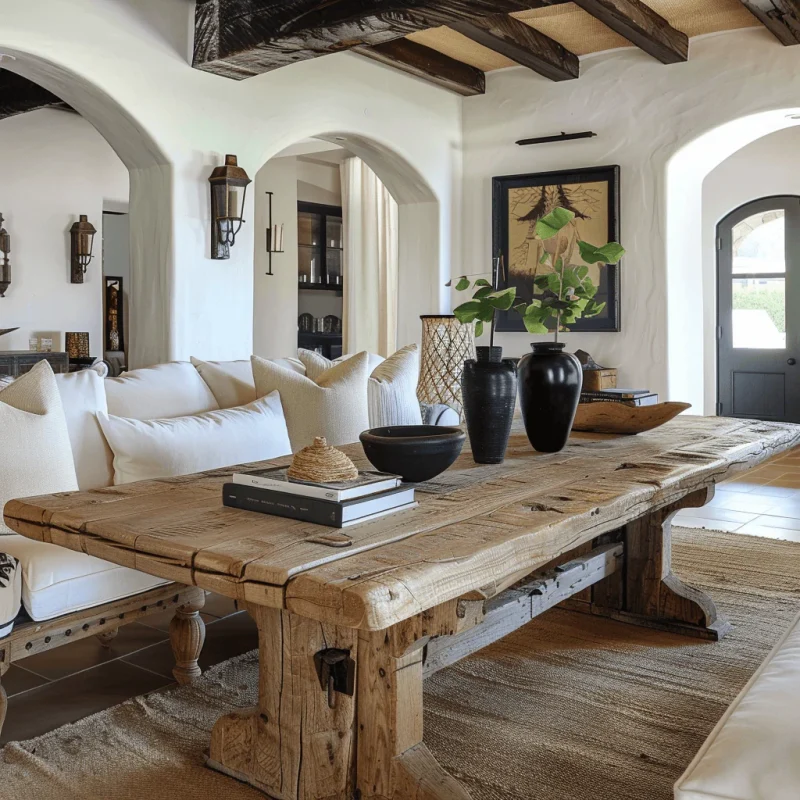
Ornate Wood
Mediterranean-style homes lean on more ornately carved wooden furniture, particularly in dark wood.
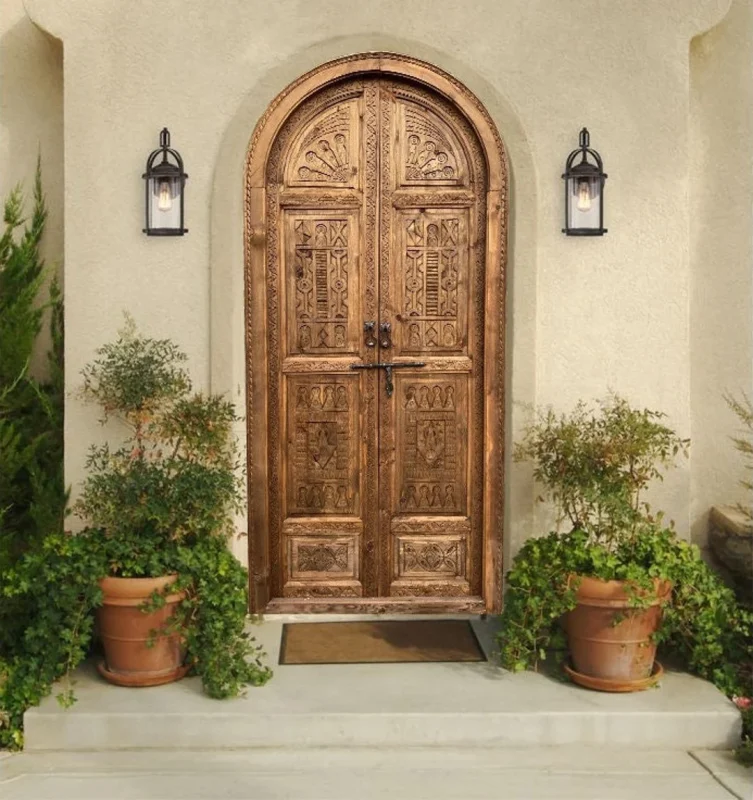
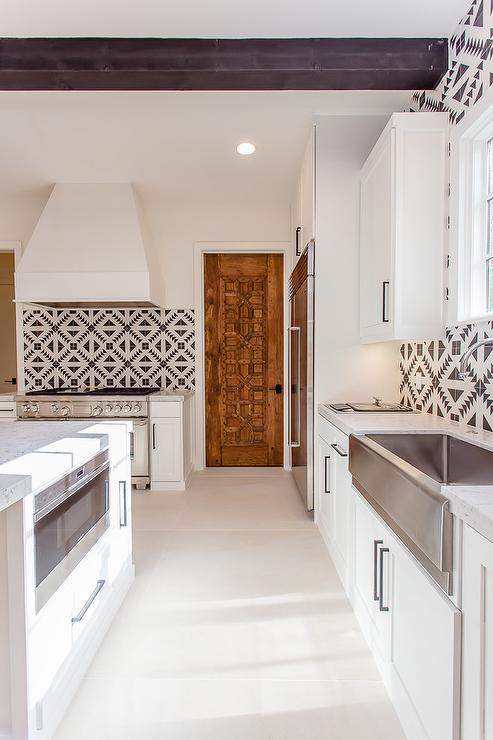
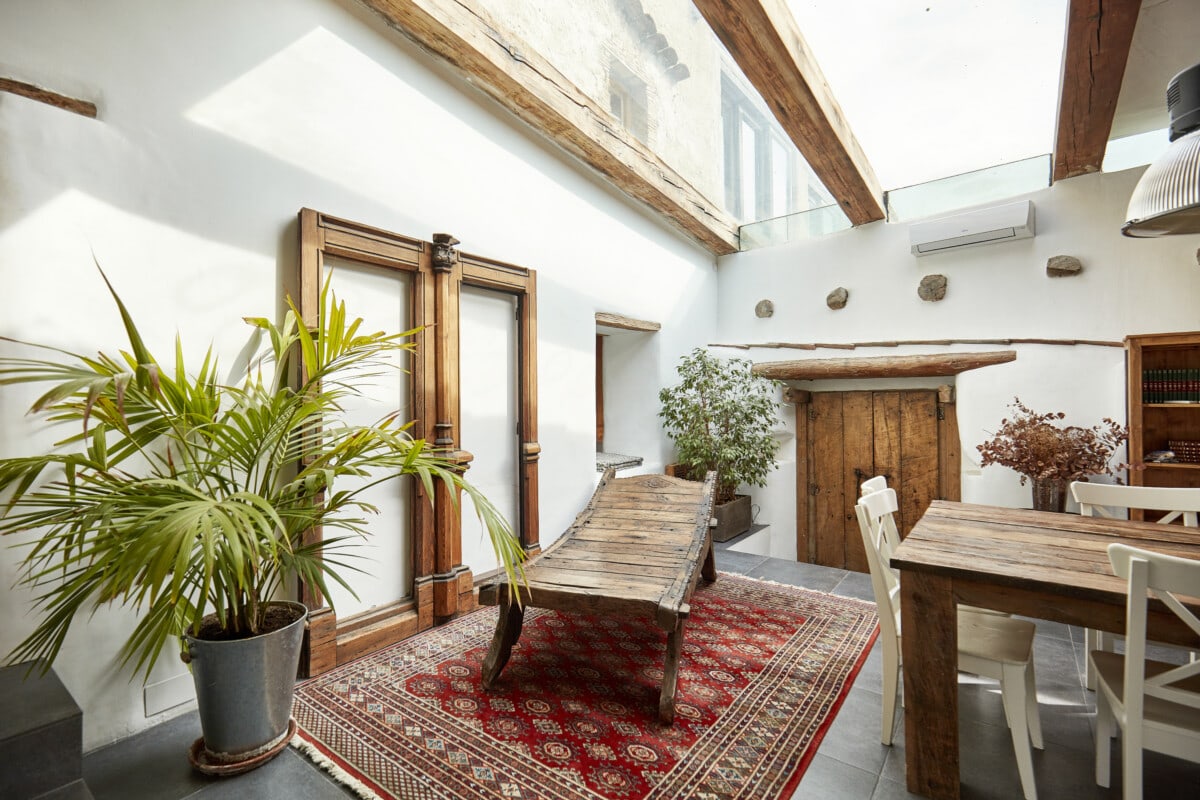
Lightweight Curtains
Sheer white or cream curtains keep the space bright and airy with natural light for a Greek or Italian-style Mediterranean theme. Look for curtains in a sheer, gauzy fabric such as linen or cotton voile, which will allow natural light to filter through while still providing privacy.
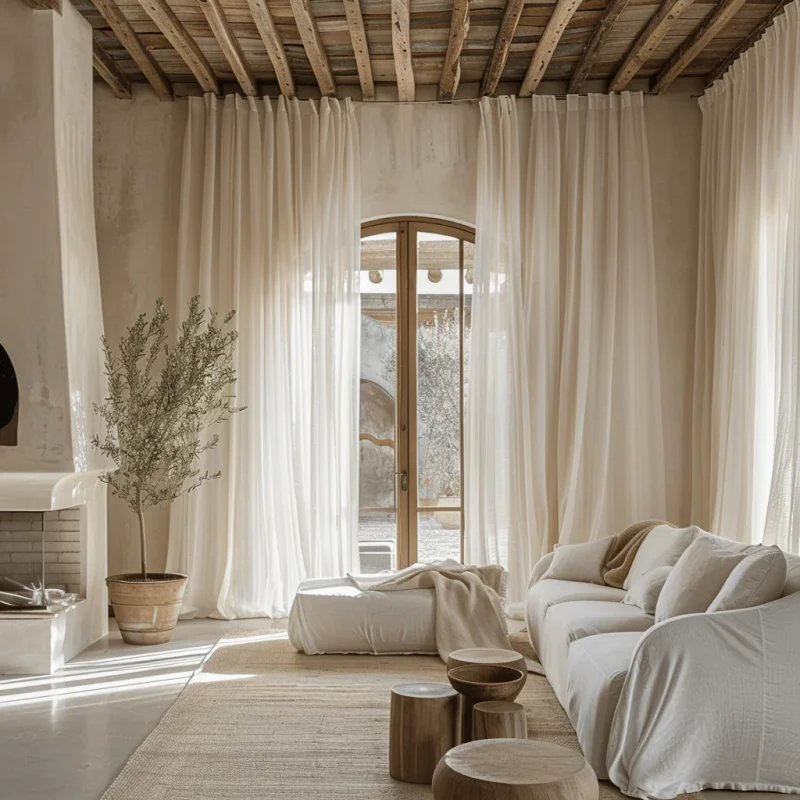
Clay Pottery
The reddish hue of terra cotta ceramic items is the idyllic pop of color in any Mediterranean home, whether it’s in floor tiles, ceramicware, or other small accessories.
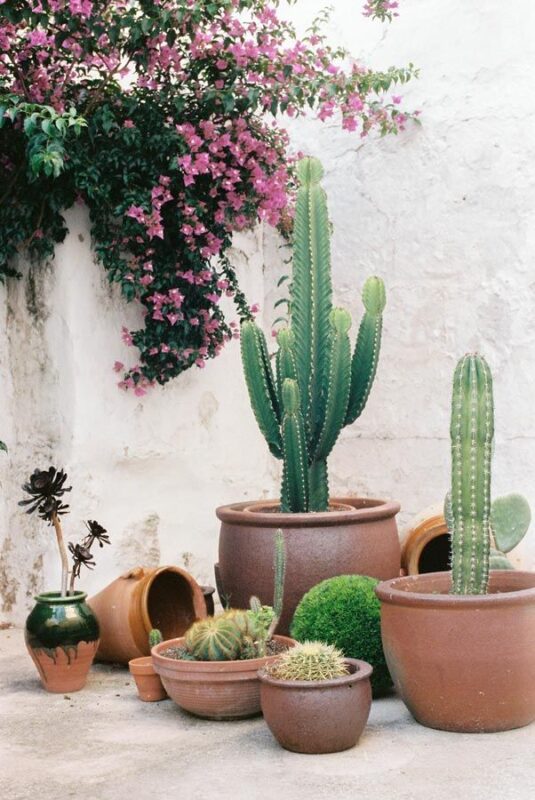
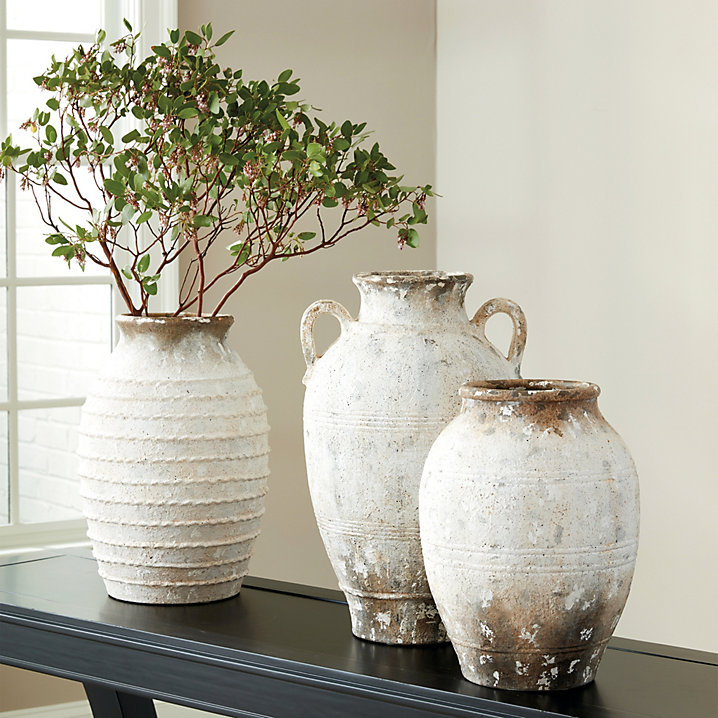
Antique or Handmade Artisan Accessories
Carefully curated accessories are important to create a Mediterranean living room. Add antique or handmade features like clay pots, rustic wooden finish antique mirrors, lanterns, woven baskets, tapestries, wall hangings, decorative wall plates and big bowls to get the artisan feel of Mediterranean styles.
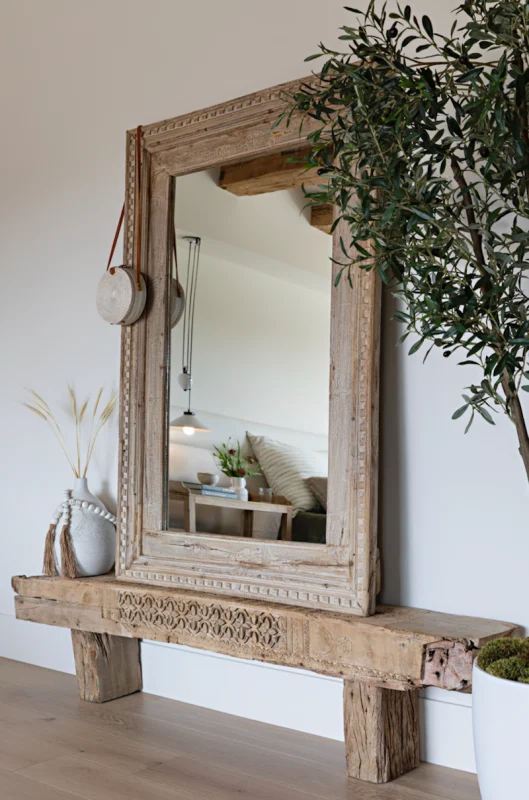
Open Shelves
In Mediterranean-style kitchens, open shelving contributes to an open, airy feeling while showing off your beautiful ceramicware and make them easily accessible.
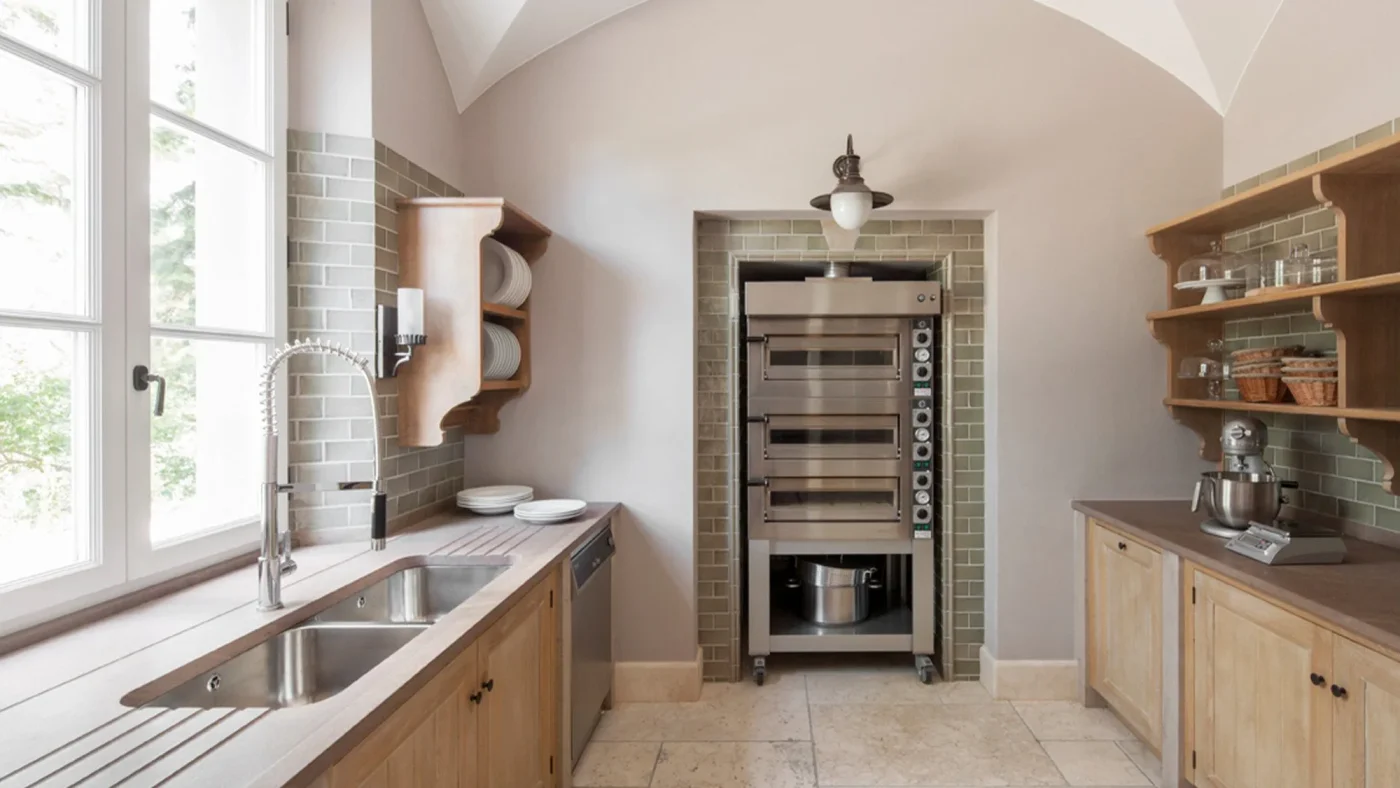
Organic Textures, Fresh Linens, Carpets & Rugs
Textiles and fabrics are used to add softness, color, and pattern to the Mediterranean living room. Patterned throw pillows, lightweight linen curtains, beautiful colorful rugs or woven sisal rugs, ottomans and poufs are the elements help to tie the space together and create a cohesive look. Linens and cottons are the perfect organic materials for the Mediterranean furniture, whether indoors or outdoors.
